The Dodge brand, a celebrated icon of American muscle, has navigated a transformative decade from 2013 to 2023. Despite industry shifts and model evolutions, Dodge, under Tim Kuniskis’ leadership, solidified its identity as the purveyor of American muscle. The Charger, Challenger, and Durango, fueled by the roaring Hellcat V8, became synonymous with power and performance.
However, the roar of the Hellcat era is fading. Dodge is now boldly stepping into the electric age, heralding a new chapter of “American e-Muscle” with the 2024 Charger Daytona. Having finally gotten behind the wheel, it’s clear this isn’t just a shift, it’s a revolution.
For some purists, the idea of an electric muscle car might be unsettling. Enthusiasts with a deep-rooted love for HEMI engines and a resistance to change might find this new direction challenging. Consider this your trigger warning: the e-Muscle era is here, and Dodge’s inaugural foray into electric muscle is not just promising—it’s genuinely impressive.
Acknowledging the Legacy: The End of an Era
The outgoing LX platform, underpinning the Charger, Challenger, and Chrysler 300, undeniably showed its age. With roots tracing back to the mid-1990s Mercedes-Benz W210 E-Class, it was a testament to engineering longevity.
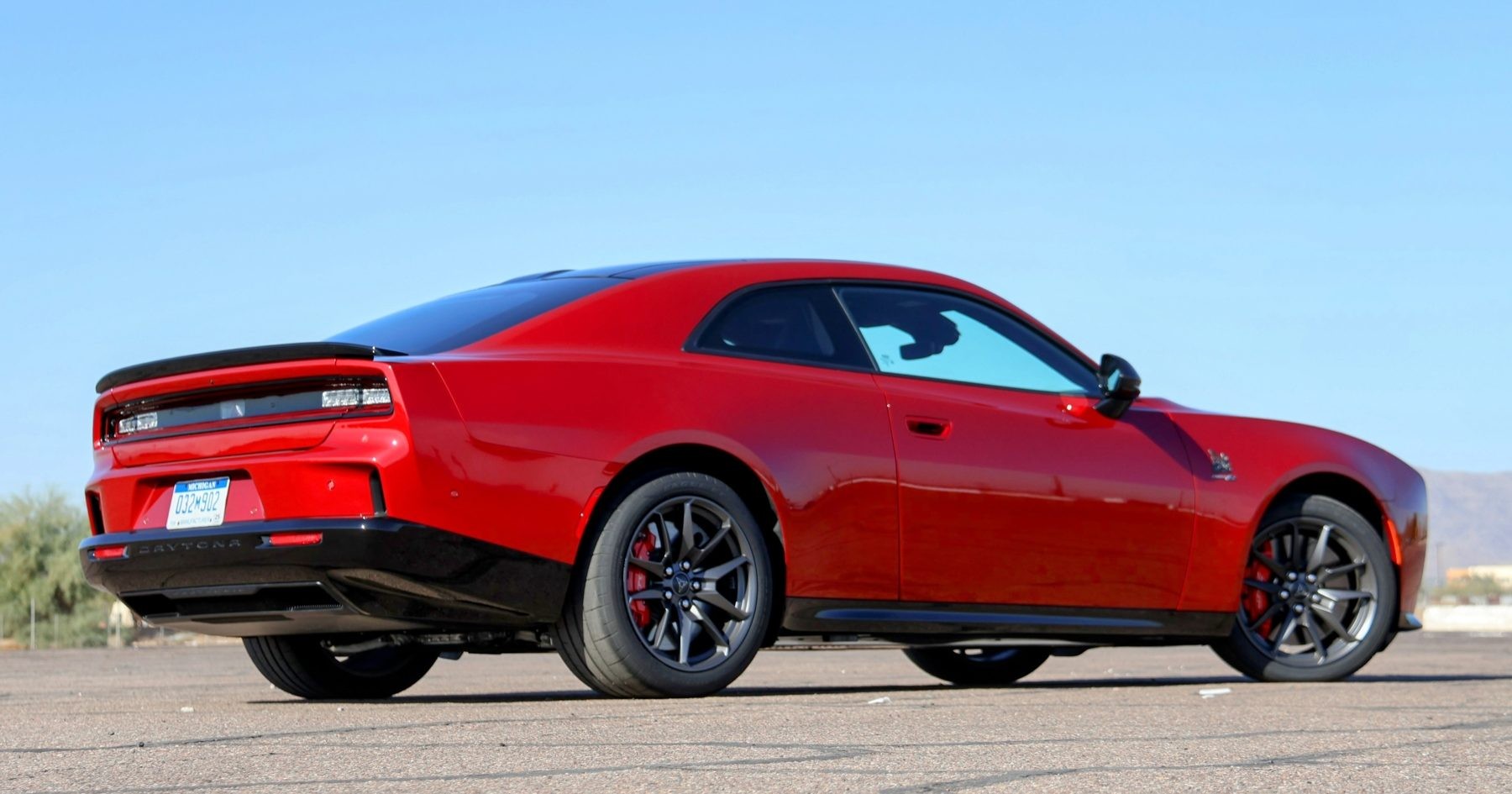 Img 8334~2
Img 8334~2
While not matching the handling prowess of contemporary sports cars, the Charger and Challenger delivered surprisingly engaging driving dynamics for their size and muscle car pedigree. Yet, by the early 2020s, evolving emission standards, fuel economy demands, and stringent safety regulations made it clear: a new foundation was needed.
The Stellantis merger, born from PSA and Fiat Chrysler, spurred the development of four new platforms, with three destined for North America: STLA Medium, STLA Large, and STLA Frame. STLA Small catered to global markets, while STLA Frame was reserved for robust trucks and SUVs like RAM and Wagoneer. STLA Medium and Large platforms are the unibody architectures designed for the future.
These platforms are “multi-energy,” engineered for battery-electric vehicles (BEVs), internal combustion engines (ICE), and hybrid powertrains. This strategic foresight by Stellantis proves particularly astute given the fluctuating adoption rates of EVs, especially in politically charged regions like North America.
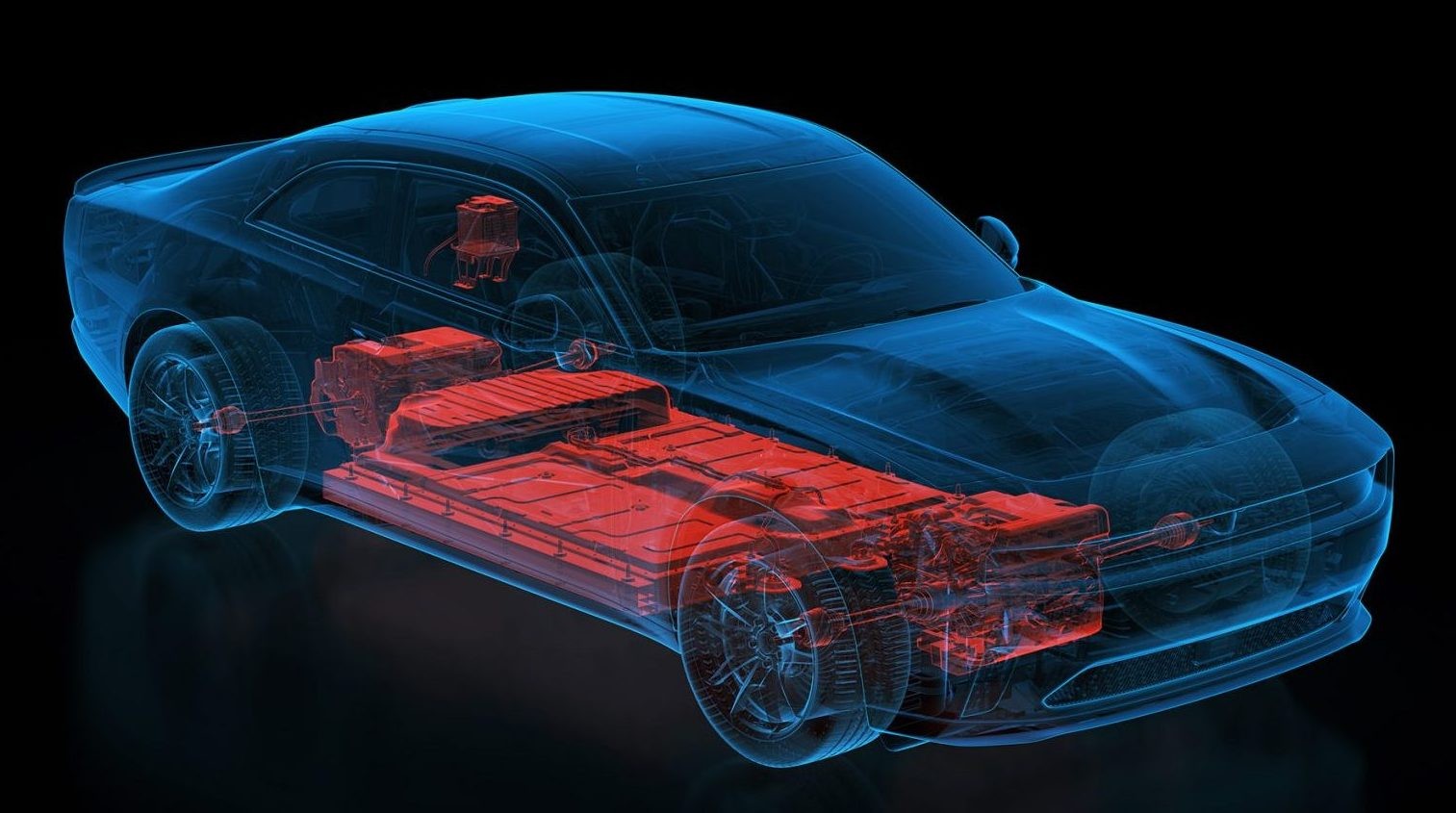 All Electric, All Wheel Drive Dodge Charger Daytona Models Are D
All Electric, All Wheel Drive Dodge Charger Daytona Models Are D
Unlike GM’s singular focus on electric-only architectures, Stellantis gains adaptability. The ability to cater to diverse market demands, from EV-embracing states like California and Washington to regions favoring traditional ICE vehicles, positions them strategically for the evolving automotive landscape.
The inaugural vehicle built upon the STLA Large platform is the New Daytona Charger for 2024. Despite launch delays pushing its arrival to late in the year, the initial models are designated 2024 due to prior certifications. The 2025 models are anticipated to debut in Spring.
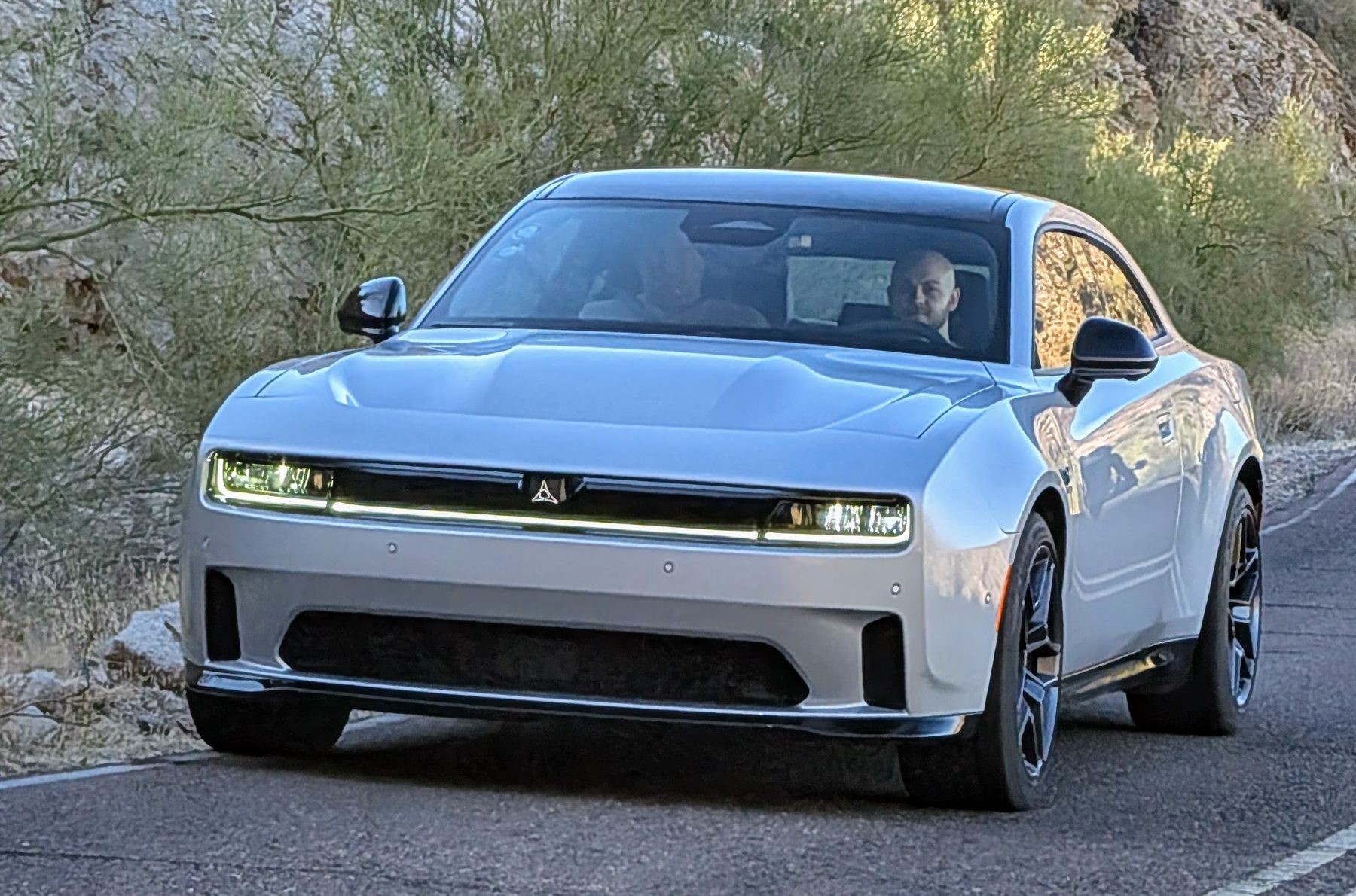 Pxl 20241205 172632356
Pxl 20241205 172632356
Interestingly, Dodge has currently shelved the Challenger nameplate, despite its strong recent sales. The Charger moniker will now encompass both two-door and four-door models (technically three and five-door hatchbacks).
The “Daytona” designation signals the battery-electric powertrain. In mid-2025, Charger variants powered by the 3.0-liter Hurricane inline-six engine will arrive, simply badged as Charger. Hybrid or plug-in hybrid versions are expected, though their branding remains undisclosed, likely avoiding the “4Xe” nomenclature. At launch, the lineup features R/T and Scat Pack trims, the models Dodge showcased in Phoenix.
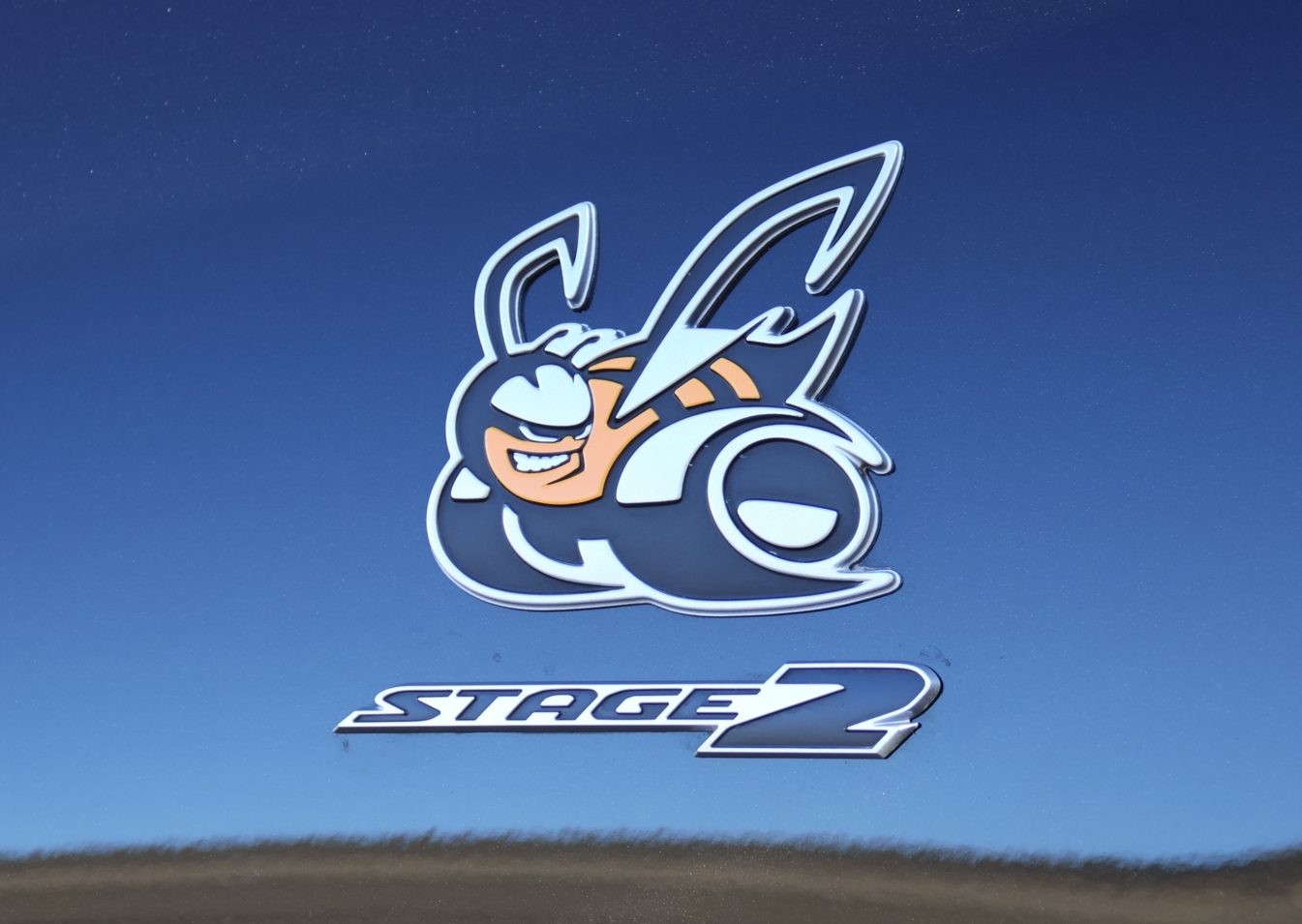 2024 Dodge Charger Daytona First Drive
2024 Dodge Charger Daytona First Drive
Design Deep Dive: Modern Muscle with Retro Hints
The new Daytona Charger thankfully avoids overt retro styling, yet subtly incorporates classic DNA. Unlike its LX predecessors, the new design hints at the second-generation 1968-1970 Charger silhouette. It’s a clean, contemporary three-box profile. Being electric, a massive front air intake is unnecessary (though Hurricane-powered models will likely feature a different fascia), resulting in a smaller grille below the bumper for cooling the battery and motors.
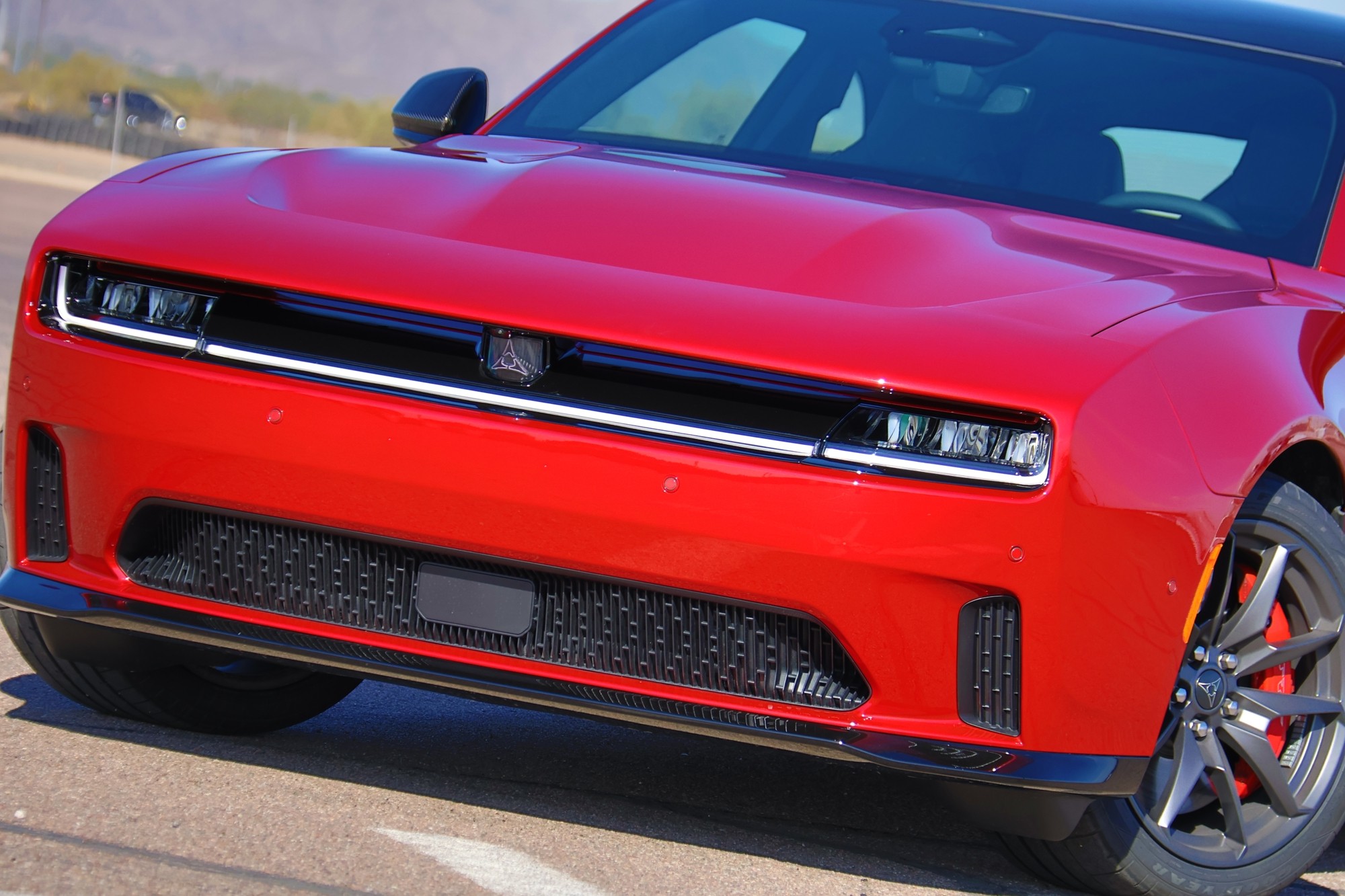 2024 Dodge Charger Daytona First Drive
2024 Dodge Charger Daytona First Drive
The Daytona name nods to the high-winged 1970 NASCAR homologation special. While that aesthetic wouldn’t translate directly to the 2020s, the new Daytona Charger incorporates a sloping hood for aerodynamics, maintaining an aggressive stance with the “R-Wing.”
The R-Wing optimizes airflow over the front, balancing lift and downforce without increasing drag. This slim panel visually connects the corners, giving the nose a taller, more assertive presence, subtly echoing the 1968 model with an airflow slot above the hood. Polestar 3 employs a similar design element.
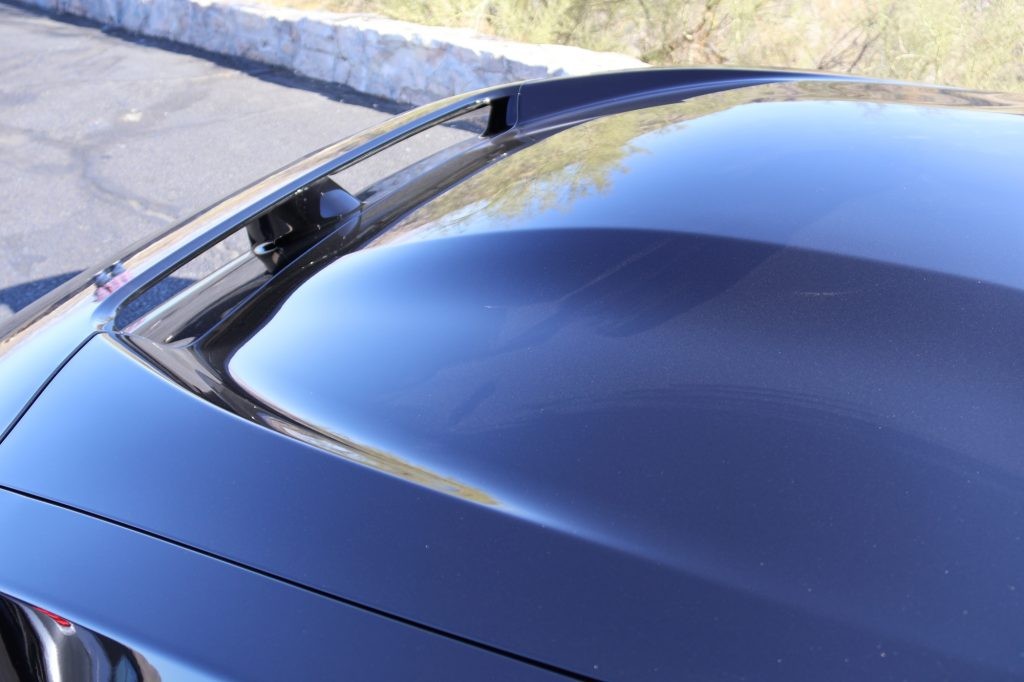 2024 Dodge Charger Daytona First Drive
2024 Dodge Charger Daytona First Drive
The most overt retro cue is the resurgence of the “Fratzog,” the тризубец logo adorning Dodge vehicles from the early 1960s to early 1970s. Its backlit debut in a teaser during the Stellantis EV day three years prior hinted at Dodge’s heritage. While many may not recognize it today, classic Dodge muscle car aficionados instantly understood the reference. The Fratzog graces a vertical support pillar on the R-Wing, echoing the 1969 model’s vertical splitter. It also appears on the rear fascia, wheel centers, and throughout the vehicle.
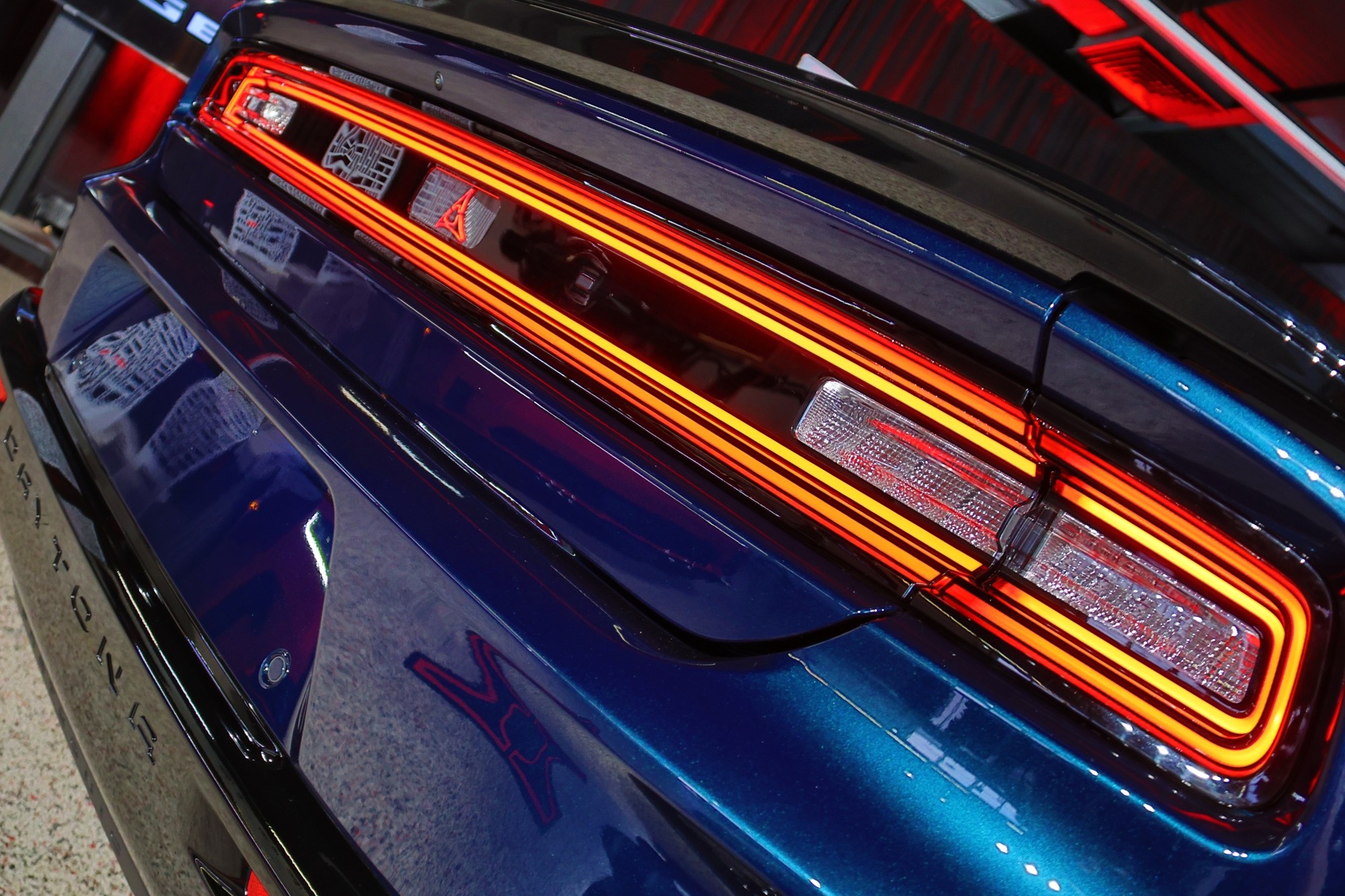 2024 Dodge Charger Daytona First Drive
2024 Dodge Charger Daytona First Drive
The rear showcases a full-width taillamp cluster with Dodge’s signature race track lighting surround. Despite the three-box profile, the Charger is a liftback, with the rear glass and trunk lid lifting as one. This design will be advantageous for potential police versions, addressing the previous Charger’s limited trunk opening.
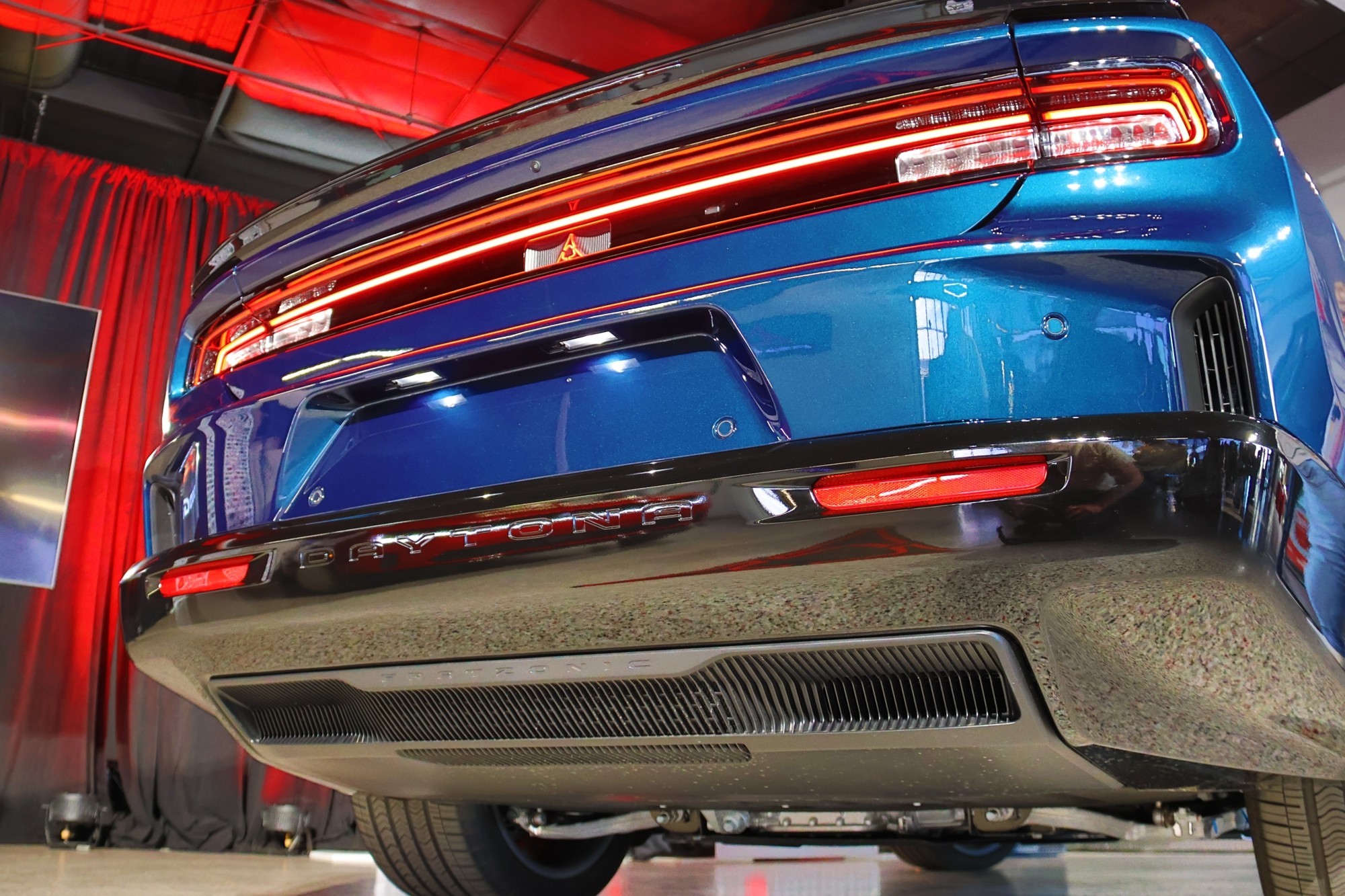 2024 Dodge Charger Daytona First Drive
2024 Dodge Charger Daytona First Drive
Below the rear bumper, a comb-like arrangement of vertical slats bears the “Fratzonic” label. This is the outlet for the Fratzonic Chambered Exhaust, a key feature of the new Daytona Charger, which we’ll explore further.
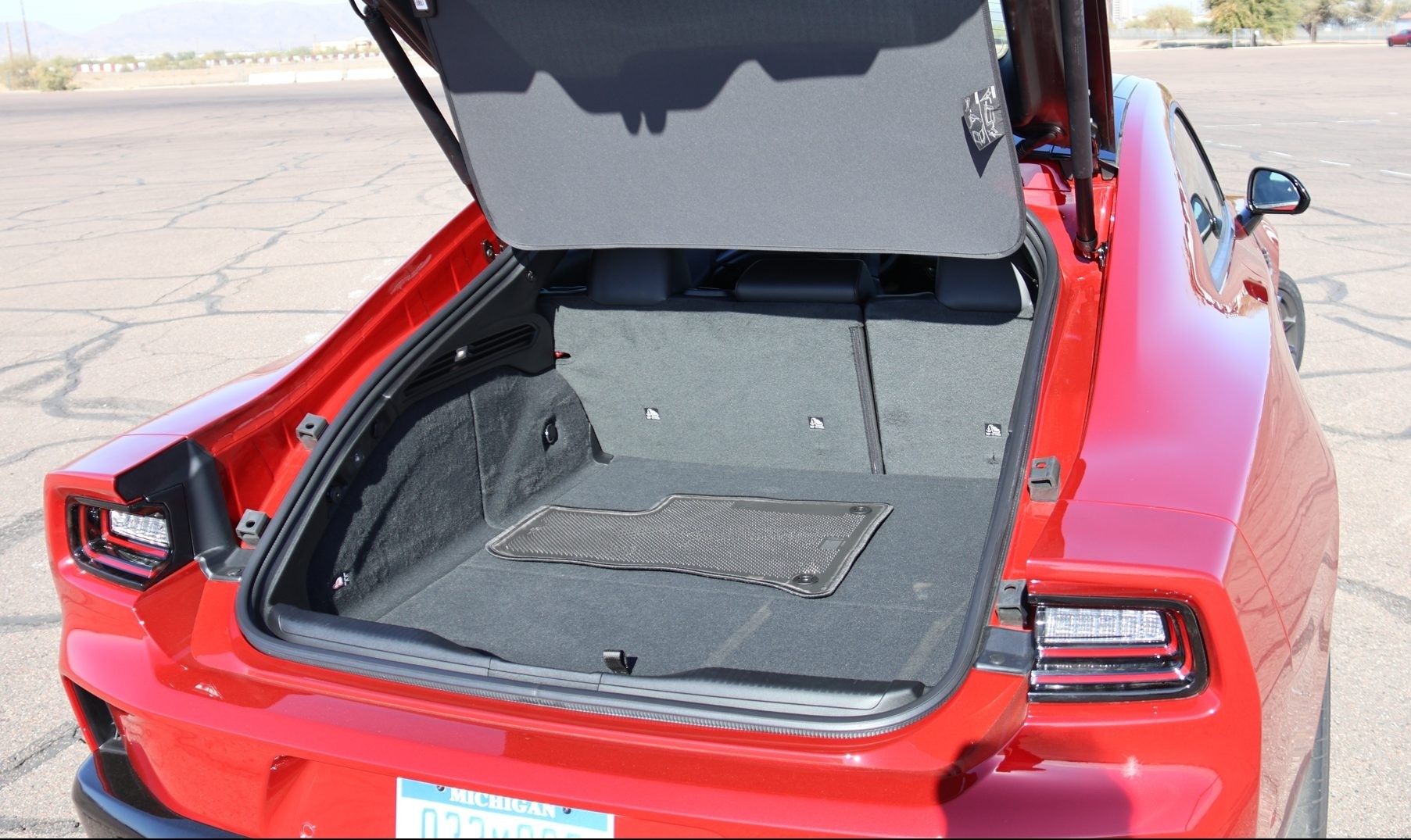 2024 Dodge Charger Daytona First Drive
2024 Dodge Charger Daytona First Drive
In person, the sheer size of the new Daytona Charger is striking. At 206.6 inches long, it’s eight inches longer than its predecessor. The 79.8-inch width surpasses the old standard body by 4.8 inches and the widebody by 1.5 inches, making widebody the new standard. It’s slightly shorter than the 1968 model but wider. Despite increased dimensions, passenger volume slightly decreases, mainly due to reduced rear legroom, yet cargo space significantly expands compared to both the old Charger and Challenger.
With rear seats up, cargo capacity is 22.7 cubic feet, up from 16.5. Folding the seats flat expands it to 37.4 cubic feet. This liftback configuration benefits enthusiasts heading to the track, easily accommodating extra wheels and tires. Plus pack-equipped Chargers include a small frunk, suitable for backpacks or charging cables.
Despite the large hatch opening, the new Daytona Charger boasts enhanced structural rigidity. The body-in-white, before battery installation, is 23% stiffer, increasing to 50% with the battery integrated.
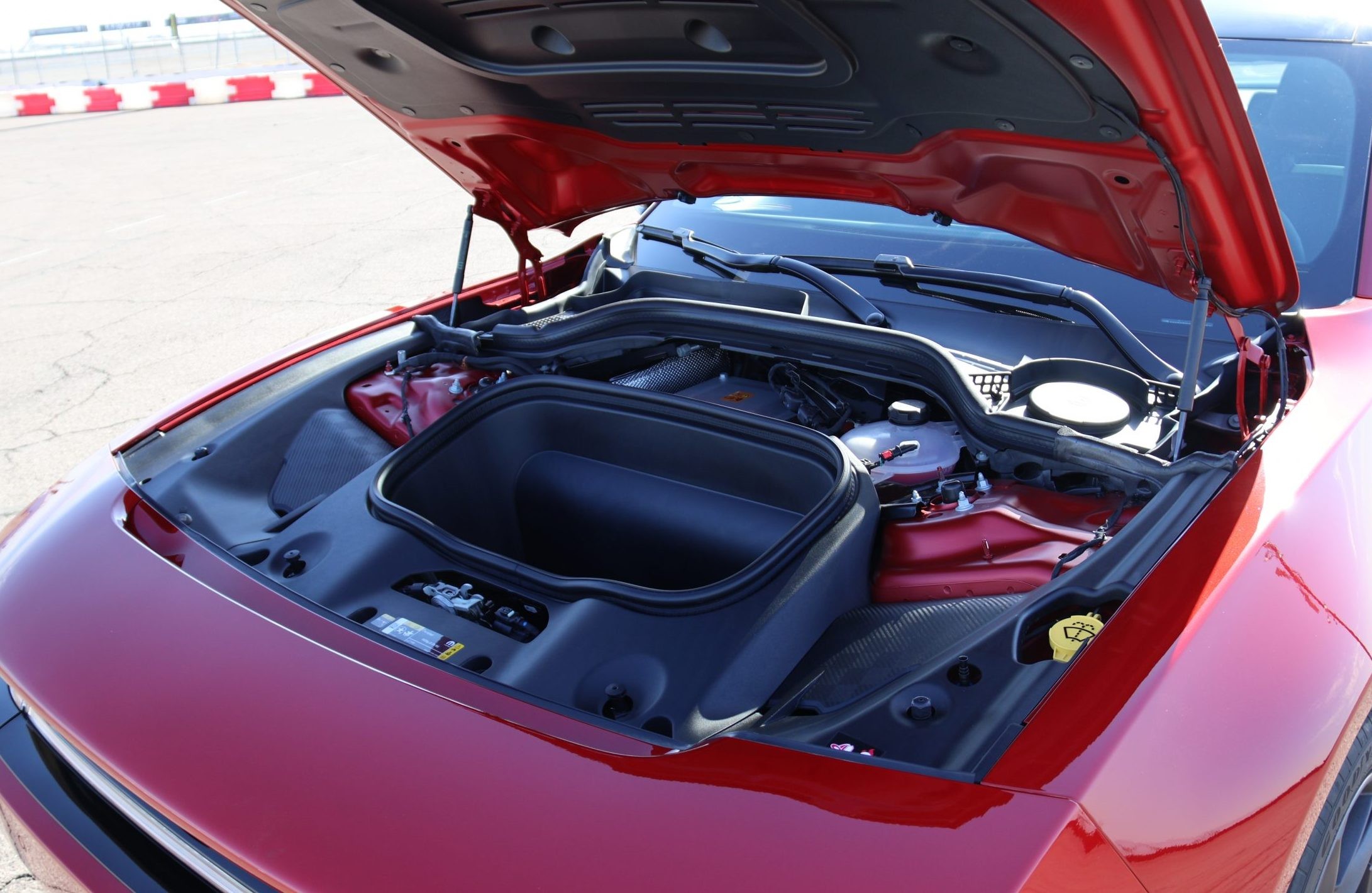 2024 Dodge Charger Daytona First Drive
2024 Dodge Charger Daytona First Drive
Initially, two-door variants will be delivered, with four-door models following. Exterior dimensions remain consistent between both, sharing sheet metal for the hood, roof, and fenders. Only the door apertures differ to accommodate the shorter front doors and added rear doors.
Inside the Cockpit: A Blend of Modern and Muscle
The interior of the new Daytona Charger presents a decidedly modern aesthetic. While Jeep and Ram have embraced extensive screen integration, the Charger adopts a more balanced approach with two primary displays. All models feature a driver-centric 12.3-inch center touchscreen. Base R/T models receive a 10-inch instrument cluster, upgradable to a 16-inch display, standard on the Scat Pack.
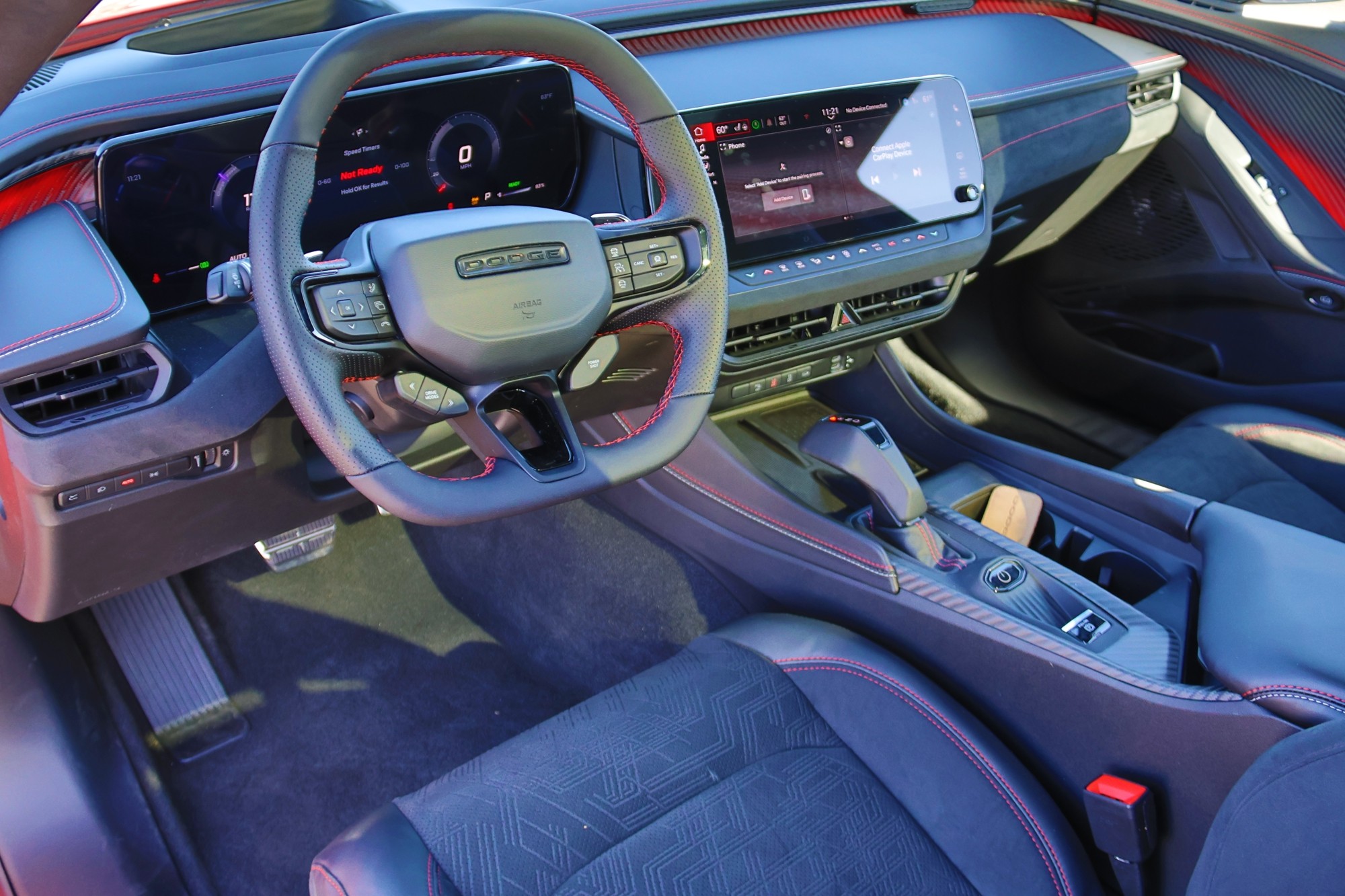 2024 Dodge Charger Daytona First Drive
2024 Dodge Charger Daytona First Drive
While many EVs opt for column shifters or touchscreen controls, Dodge retains a classic pistol grip shifter, albeit modernized. This electronic interface mimics a traditional mechanical shifter, holding gear positions rather than returning to center. While current models feature single-speed transmissions, the high-performance Banshee powertrain is expected to incorporate a multi-ratio transmission in the future.
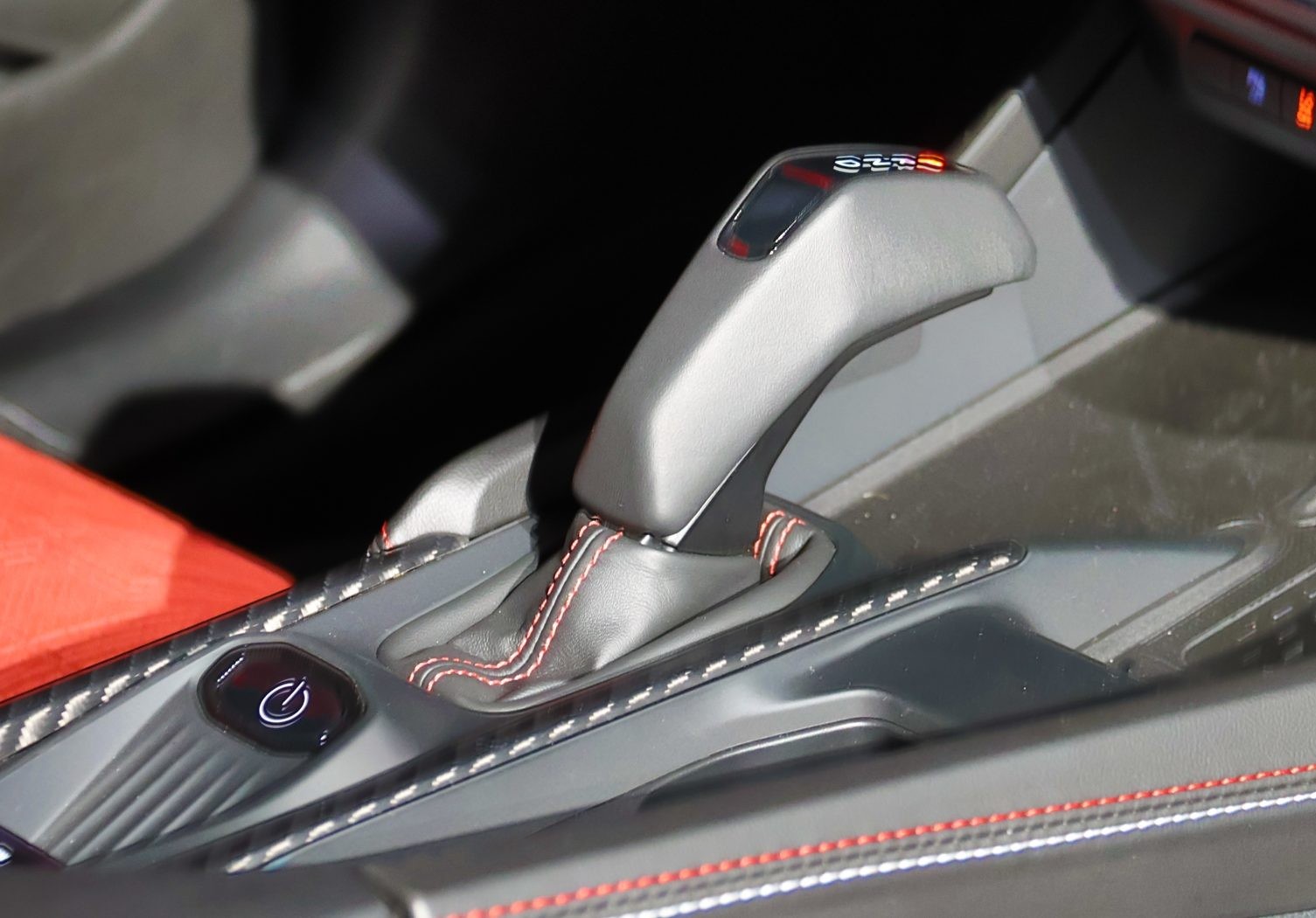 2024 Dodge Charger Daytona First Drive
2024 Dodge Charger Daytona First Drive
The cabin of the new Daytona Charger feels significantly more premium than its predecessor, featuring soft-touch materials, contrast stitching, and ambient lighting integrated into door panel moldings. Notably, piano black trim is absent, except for display bezels.
Two front seat configurations are available. Standard seats feature a two-piece back with adjustable headrests, with fabric and leatherette upholstery on base models, and optional full leatherette in Black or Demonic Red on the R/T. Scat Pack buyers can opt for high-back seats with fixed headrests in suede and leatherette or full Nappa leather combinations.
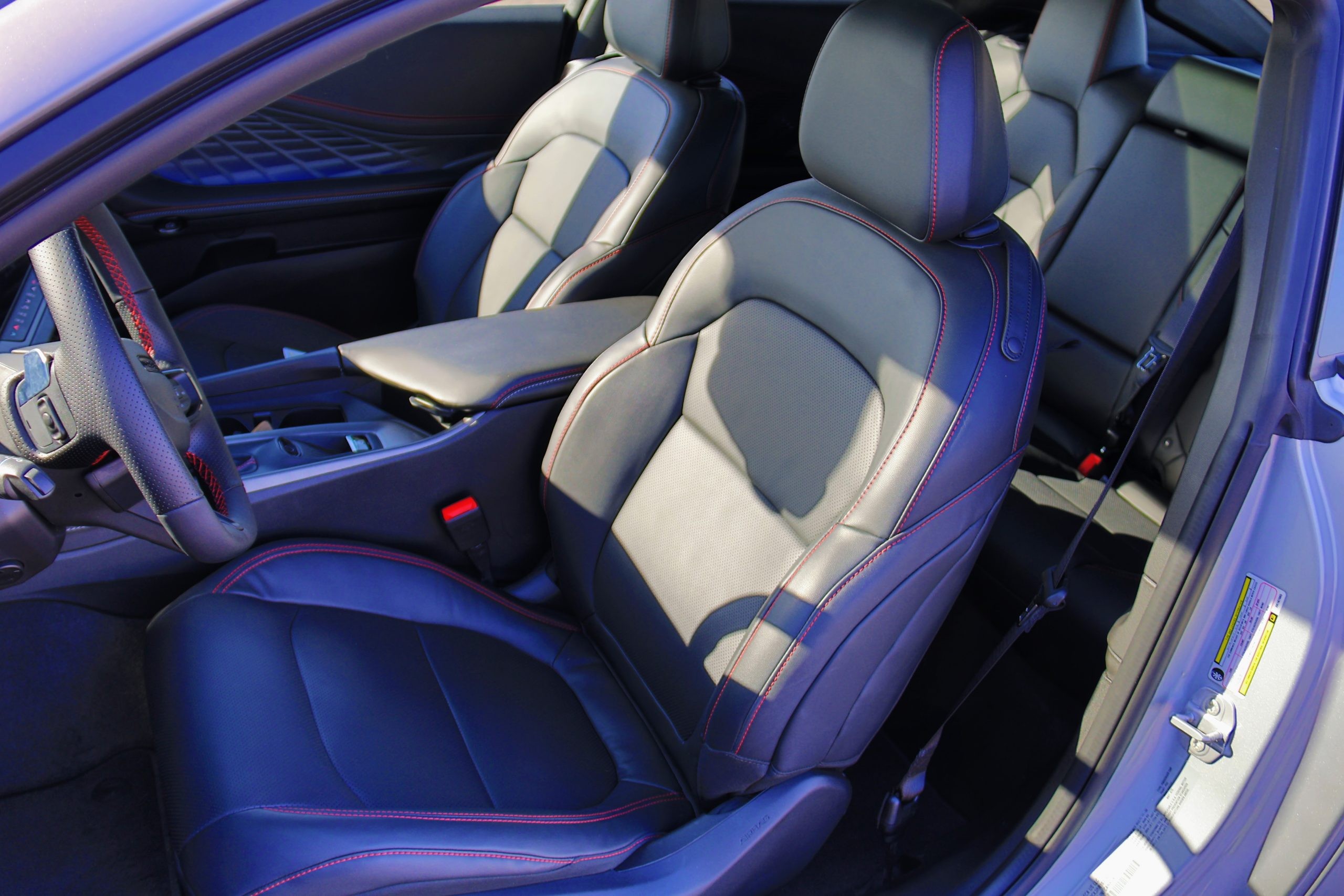 2024 Dodge Charger Daytona First Drive
2024 Dodge Charger Daytona First Drive
Both seat types proved comfortable during road driving and supportive during spirited driving on winding roads and the Radford Racing School track. A notable aspect is the seating position. Due to the under-floor battery pack, the floor is slightly higher than the previous model, resulting in a hip point closer to modern crossovers. It’s not SUV-high, but not sports car low either.
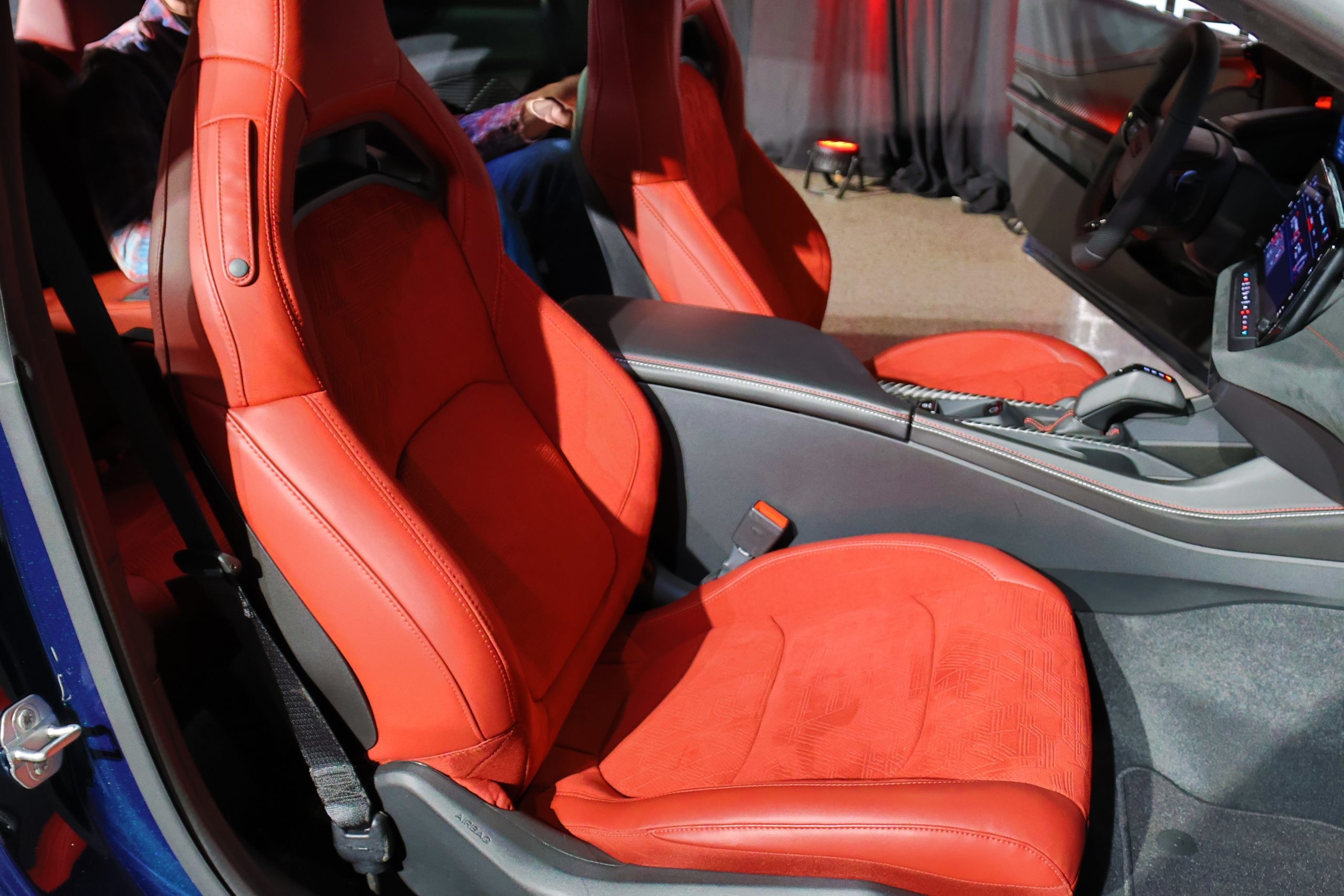 2024 Dodge Charger Daytona First Drive
2024 Dodge Charger Daytona First Drive
The increased size, compared to both the previous Charger and especially the Challenger, notably benefits rear seat space. Front seats power forward and doors are long, allowing surprisingly easy rear access. Rear passenger space is generous, offering ample knee and headroom for adults, making the new Daytona Charger genuinely capable for weekend road trips with four adults and luggage.
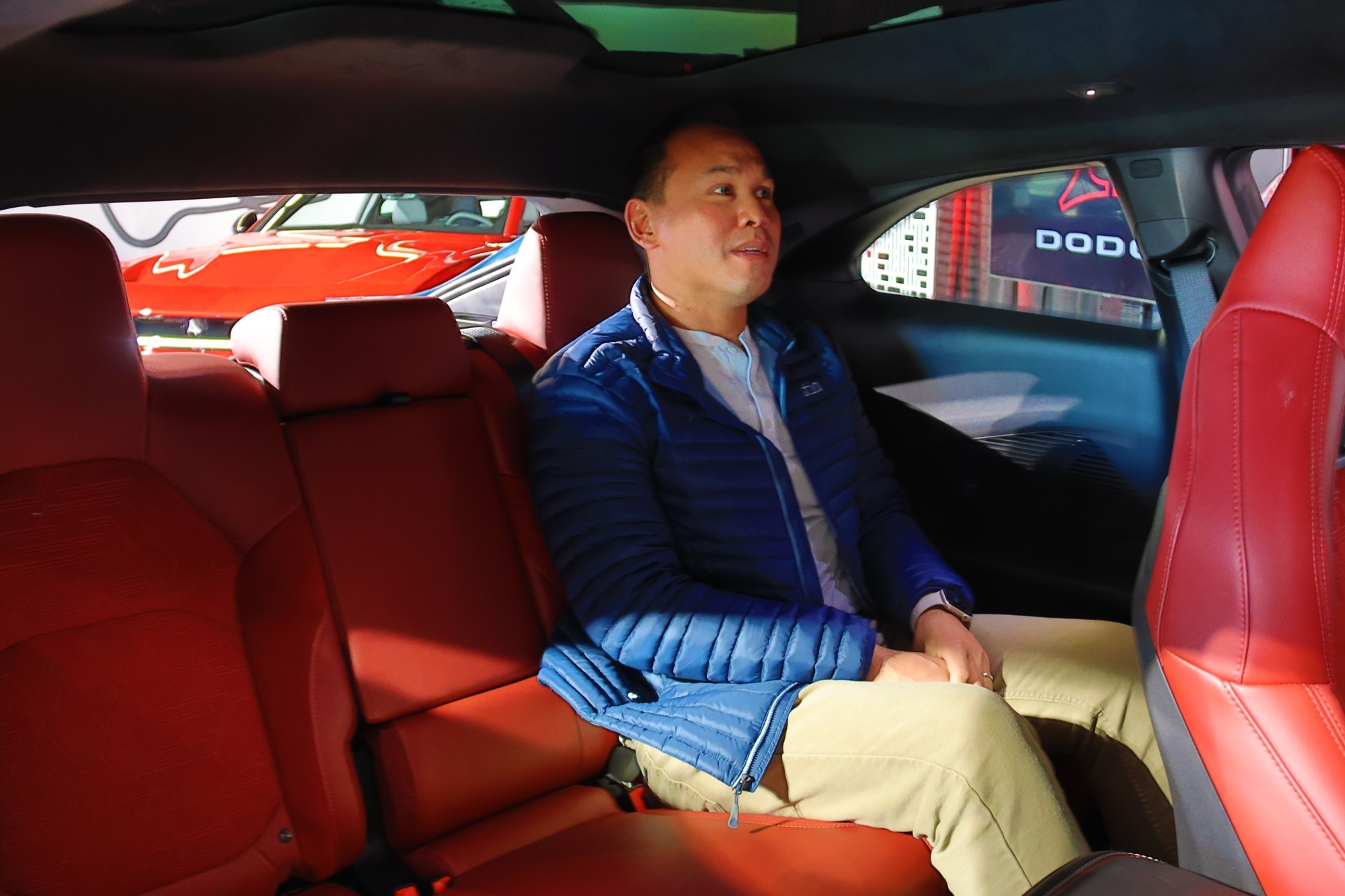 2024 Dodge Charger Daytona First Drive
2024 Dodge Charger Daytona First Drive
The steering wheel features a flattened top and bottom, but avoids extreme yoke designs. It’s a comfortable, thick-rimmed wheel, easy to maneuver even on twisty roads. The larger 16-inch instrument cluster display is thoughtfully designed to be fully visible above the wheel rim, ensuring key information is always in sight.
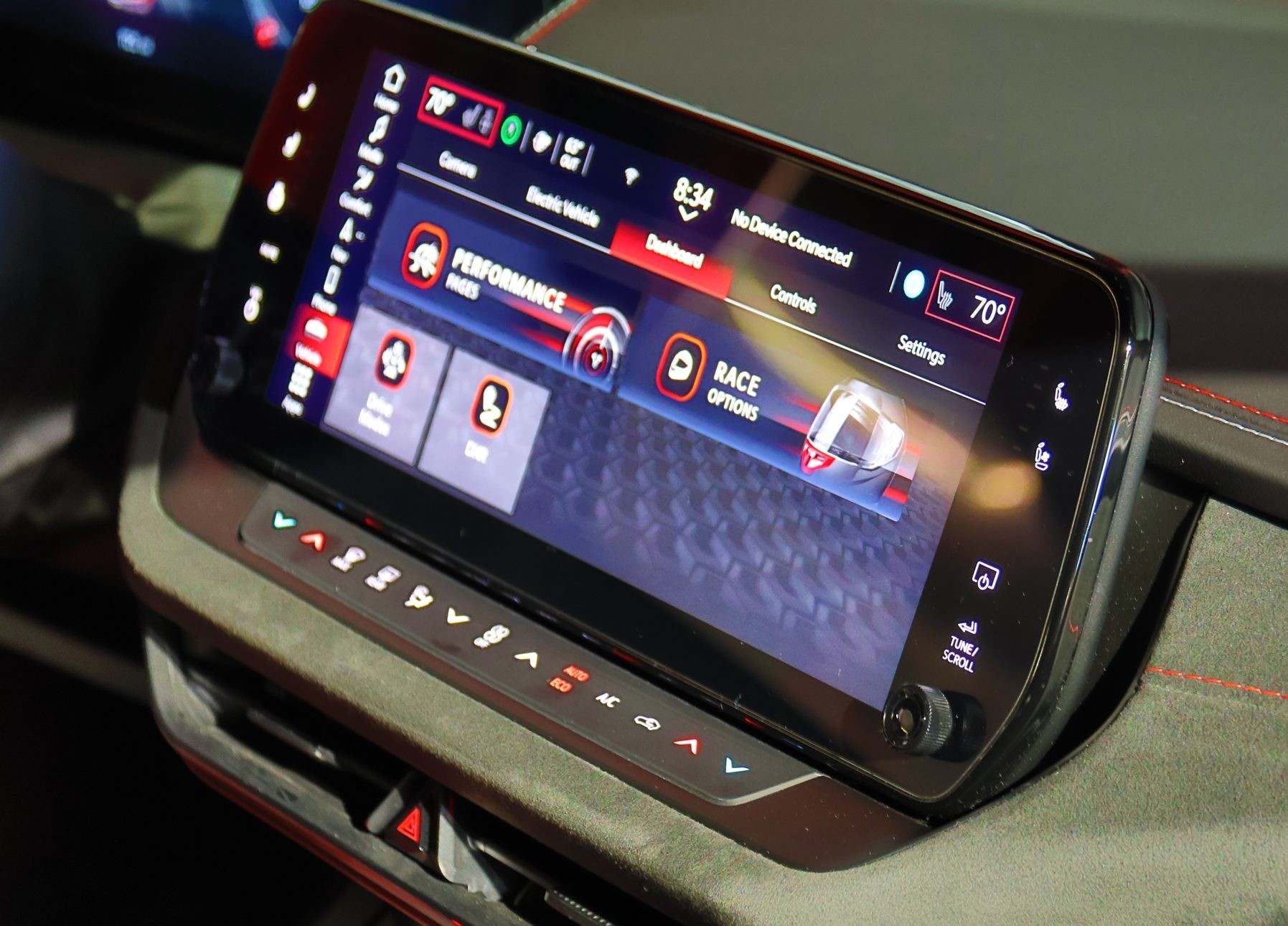 2024 Dodge Charger Daytona First Drive
2024 Dodge Charger Daytona First Drive
A minor interior drawback is the climate control strip below the center touchscreen. Similar to the latest Mustang and some Ford models, these touch controls are integrated into a single piece of somewhat cheap-feeling plastic, feeling slightly out of place in the otherwise premium cabin.
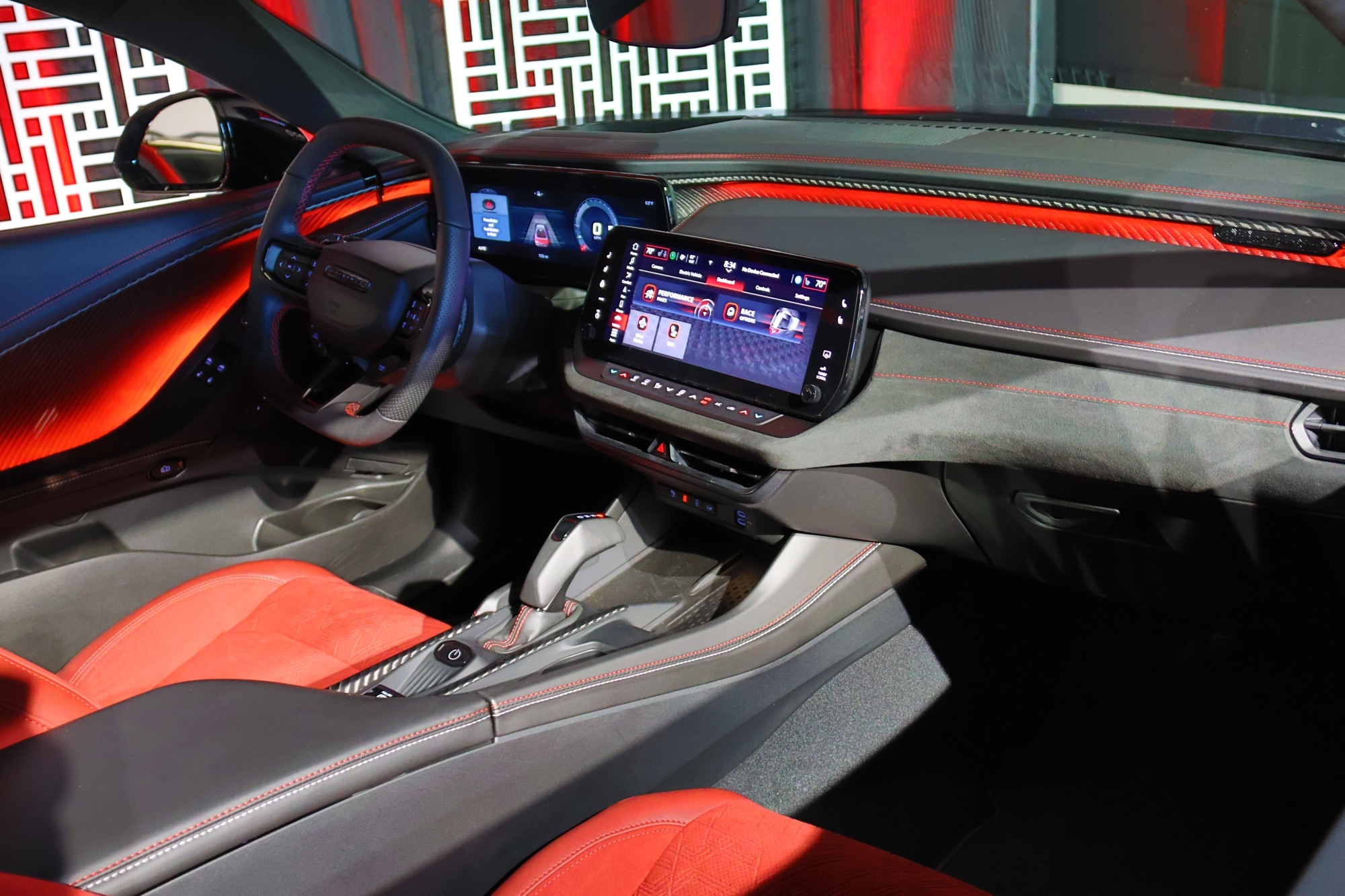 2024 Dodge Charger Daytona First Drive
2024 Dodge Charger Daytona First Drive
Conquering the Curves: Driving Dynamics on Road and Track
The drive program was based at the Radford Racing School in Chandler, Arizona, formerly the Bob Bondurant School of High-Performance Driving. Following presentations by Dodge leadership, it was time to assess if the new Daytona Charger lived up to the Hellcat legacy.
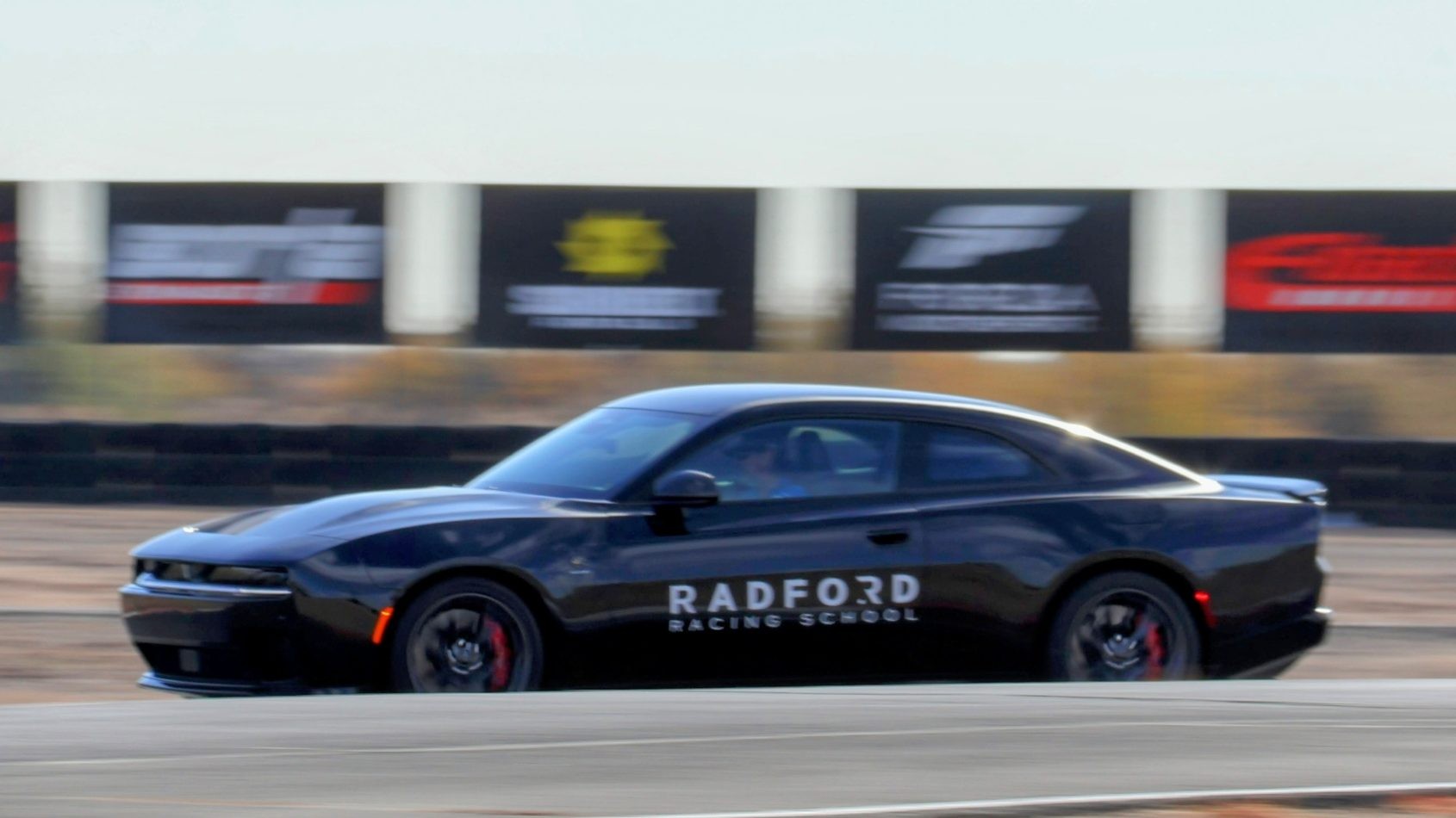 Img 8409~2
Img 8409~2
While some die-hard V8 enthusiasts may remain unconvinced about electric vehicles, they represent a minority of past Charger and Challenger buyers. V6 models dominated sales, while Hellcats, though iconic, were not the volume sellers.
The road drive began in a Scat Pack with the Track package, starting at $73,190, with additional options bringing the total to $78,680. All 2024 Charger Daytonas employ identical 250-kW electric drive modules (EDM) on both axles, each comprising a permanent magnet motor, reduction gear set, and integrated power electronics.
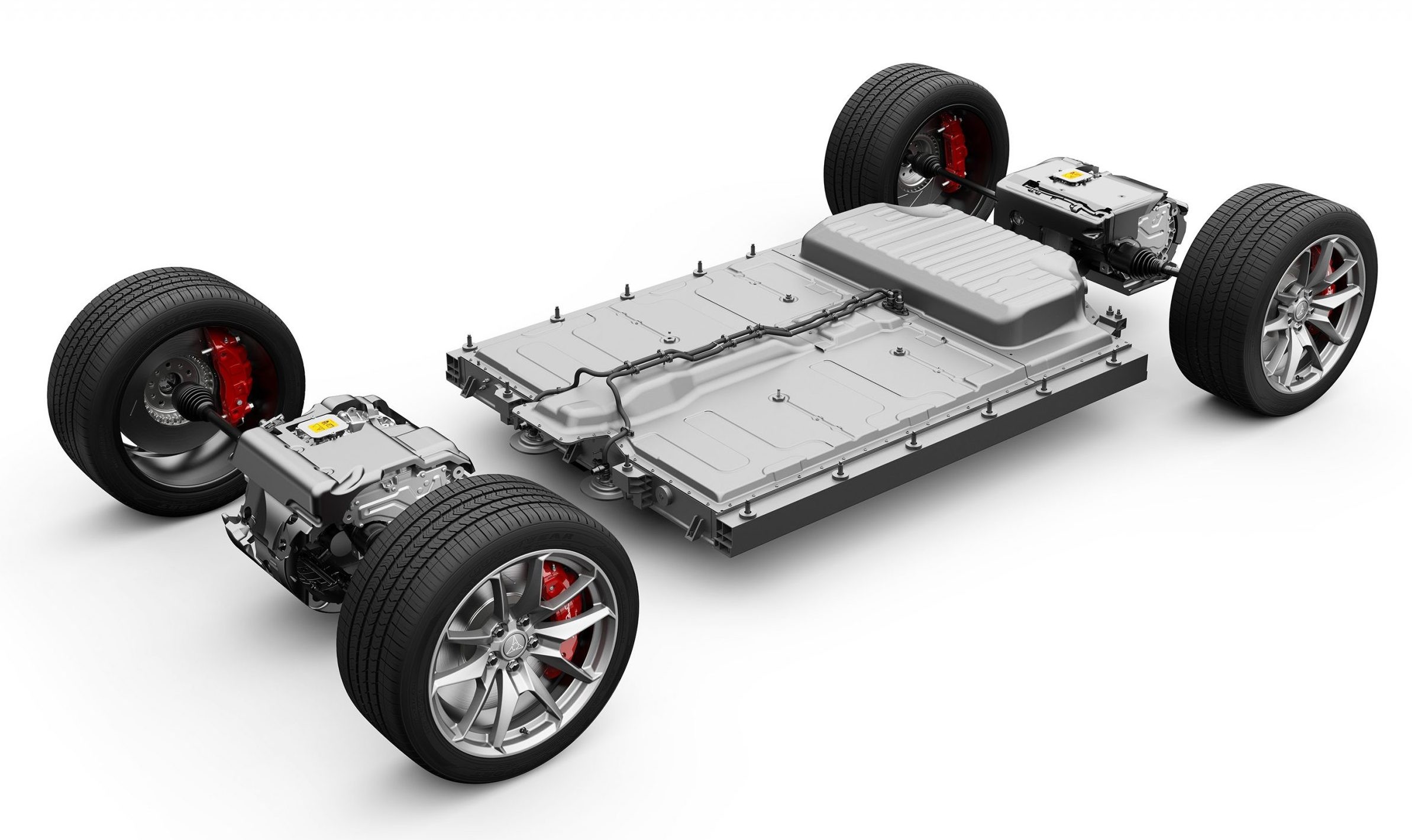 All Electric, All Wheel Drive Dodge Charger Daytona Models Are D
All Electric, All Wheel Drive Dodge Charger Daytona Models Are D
In R/T trim, EDMs deliver 456 hp and 404 lb-ft of torque, with a Power Shot button adding 40 hp for 10 seconds. Scat Pack models boast a Direct Connection Stage 2 tune (with further tunes planned), producing 630 hp and 627 lb-ft, also with a 40-hp Power Shot. The front EDM includes a clutch to decouple it during cruising, enhancing efficiency.
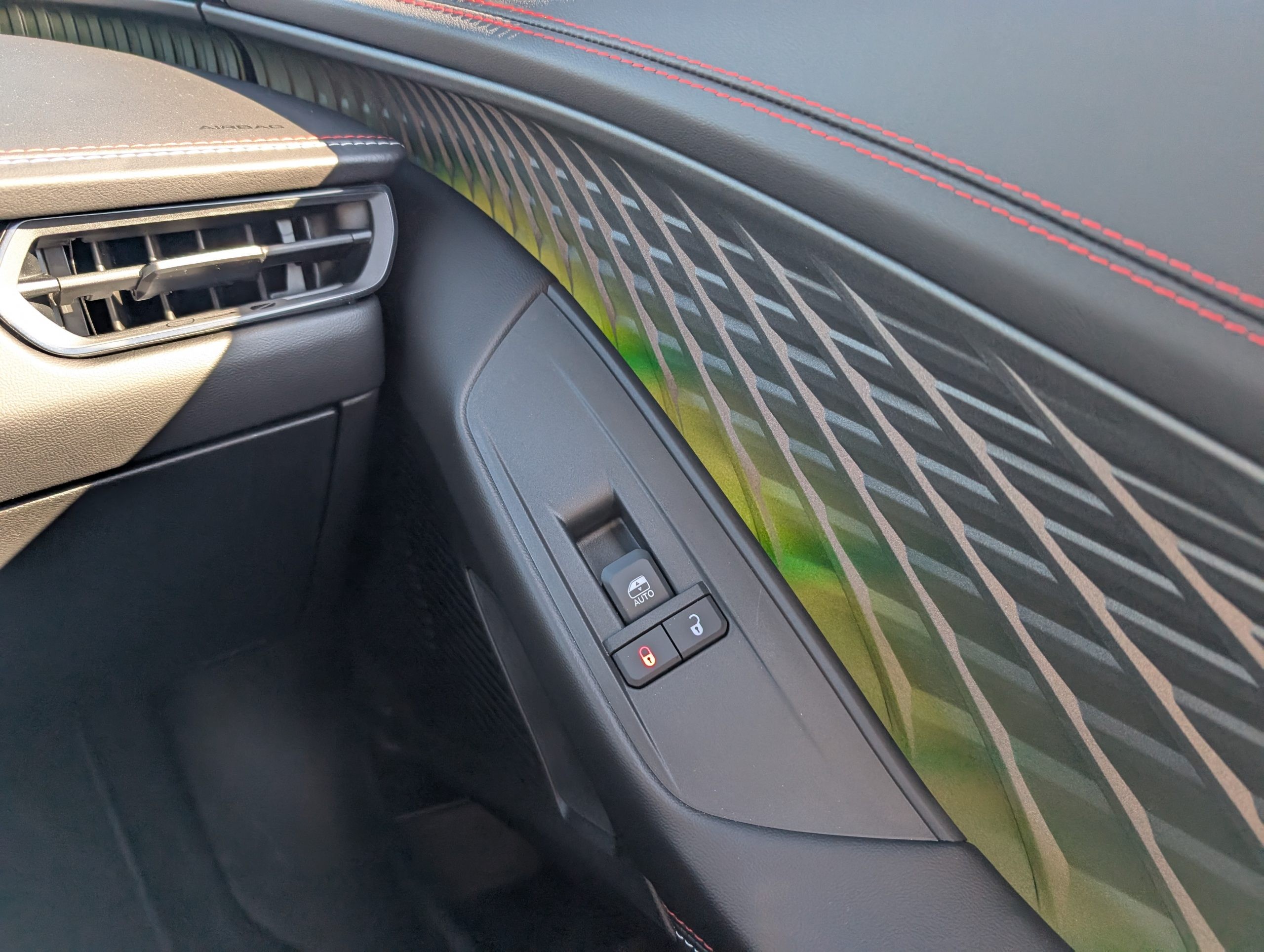 Pxl 20241205 173528377
Pxl 20241205 173528377
A 100.5-kWh lithium-ion battery pack, with Samsung SDI cells, sits between the EDMs. The R/T achieves an EPA-estimated 308 miles of range, while the Scat Pack, slightly heavier with stickier tires, is rated at 241 miles. Current Charger Daytonas use a 400V architecture, with the Banshee variant upgrading to 800V. Dodge engineers claim 220-kW DC fast charging capability, achieving 20-80% charge in approximately 24 minutes. 11-kW AC charging enables 5-80% in 6.8 hours.
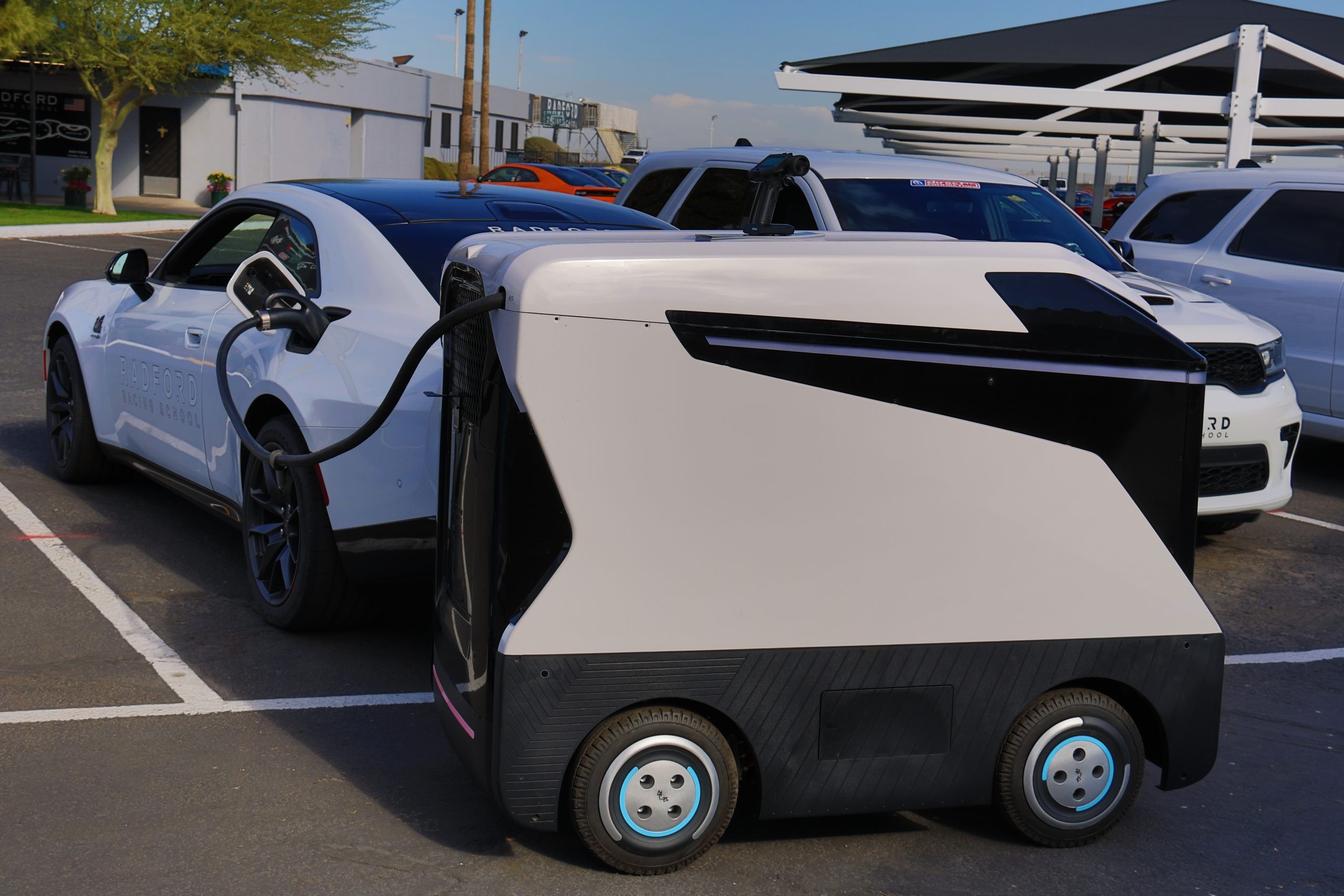 2024 Dodge Charger Daytona First Drive
2024 Dodge Charger Daytona First Drive
Charging was not conducted during the Arizona drive, and Radford School is planning DC fast charger installations. Michigan startup Ion Dynamics provided mobile charging units, each with a 104-kWh battery and 60-kW charging capacity, replenishable via standard 240V outlets.
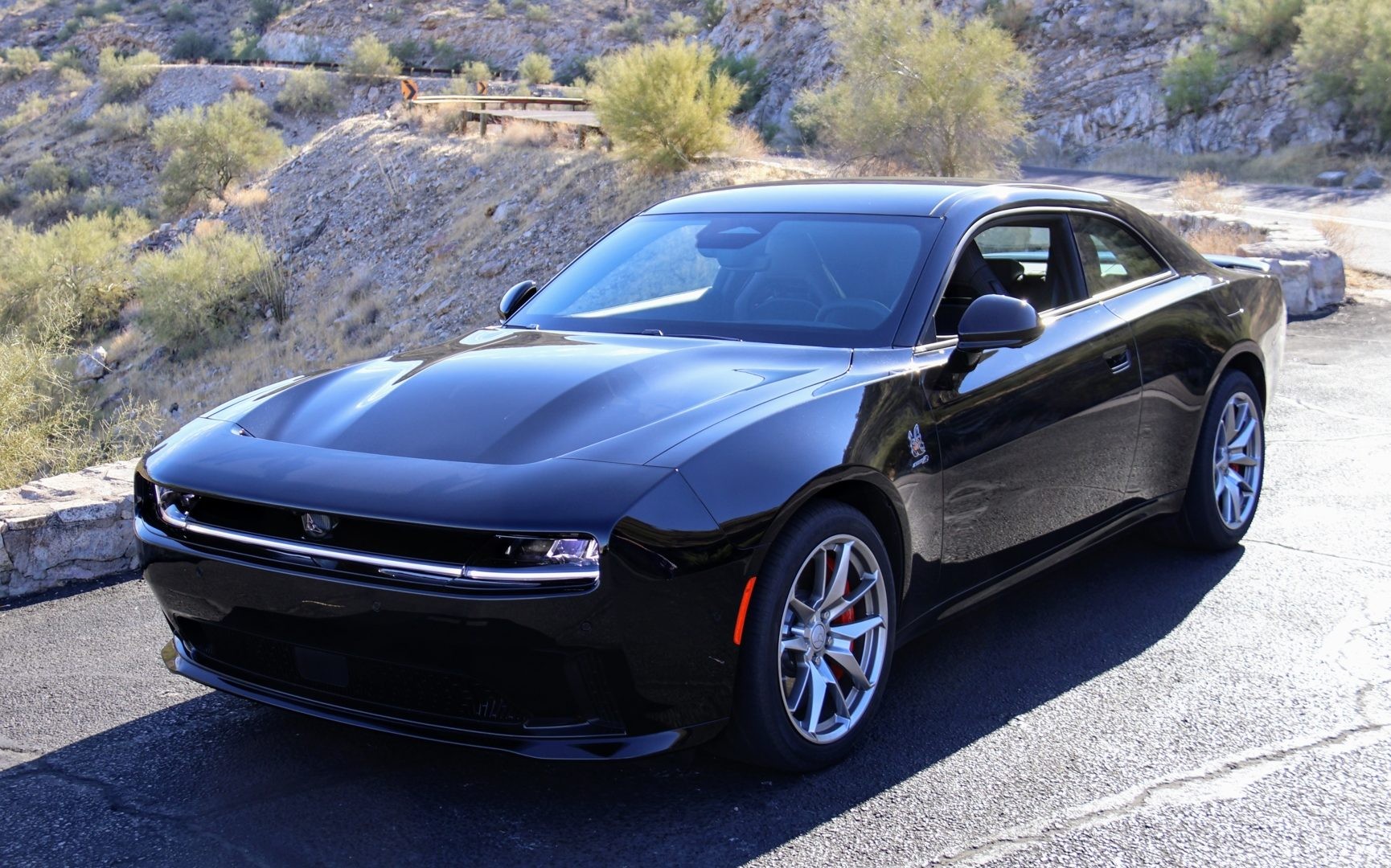 2024 Dodge Charger Daytona First Drive
2024 Dodge Charger Daytona First Drive
Pressing the start button activates the Fratzonic exhaust, emitting a turbine-like spool-up sound followed by a roar, signaling readiness. Unlike the Hyundai Ioniq 5N, the Fratzonic sound is unique to the new Daytona Charger, not emulating a traditional engine, but clearly conveying performance intent.
At “idle,” it settles into a pulsing rumble. The system can be disabled for quiet operation, and becomes more aggressive in track, drag, or drift modes. Aftermarket sound palettes are anticipated.
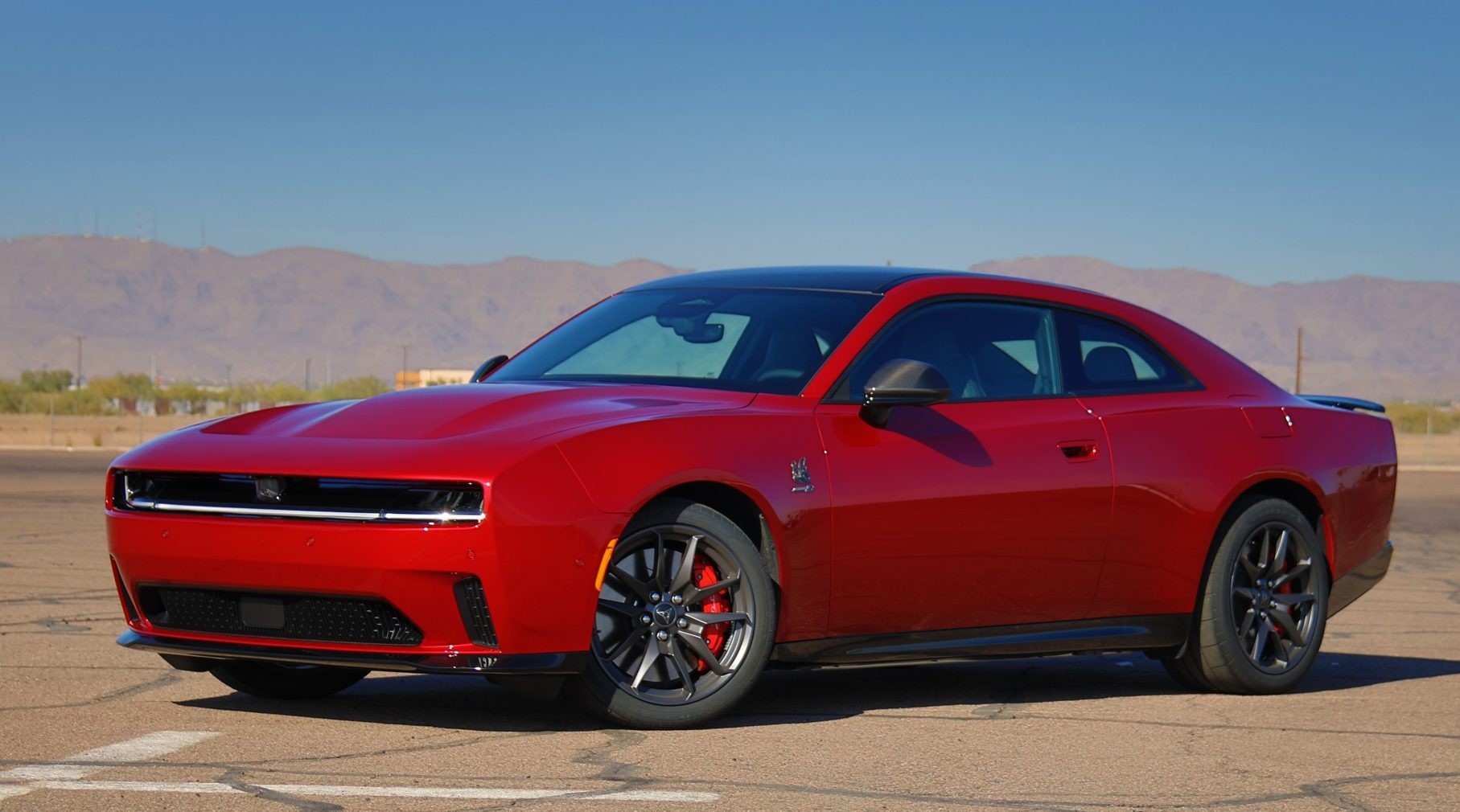 2024 Dodge Charger Daytona First Drive
2024 Dodge Charger Daytona First Drive
Driving in Auto mode, the route included interstate and surface streets leading to South Mountain Park. The Charger features multi-link front and integral link rear suspension. R/T models have conventional monotube dampers, while the Scat Pack features dual-valve adaptive units. Base R/T models ride on 245/55ZR18 Nexen all-season tires, with 255/45ZR20 Nexens available in Plus or Blacktop packages.
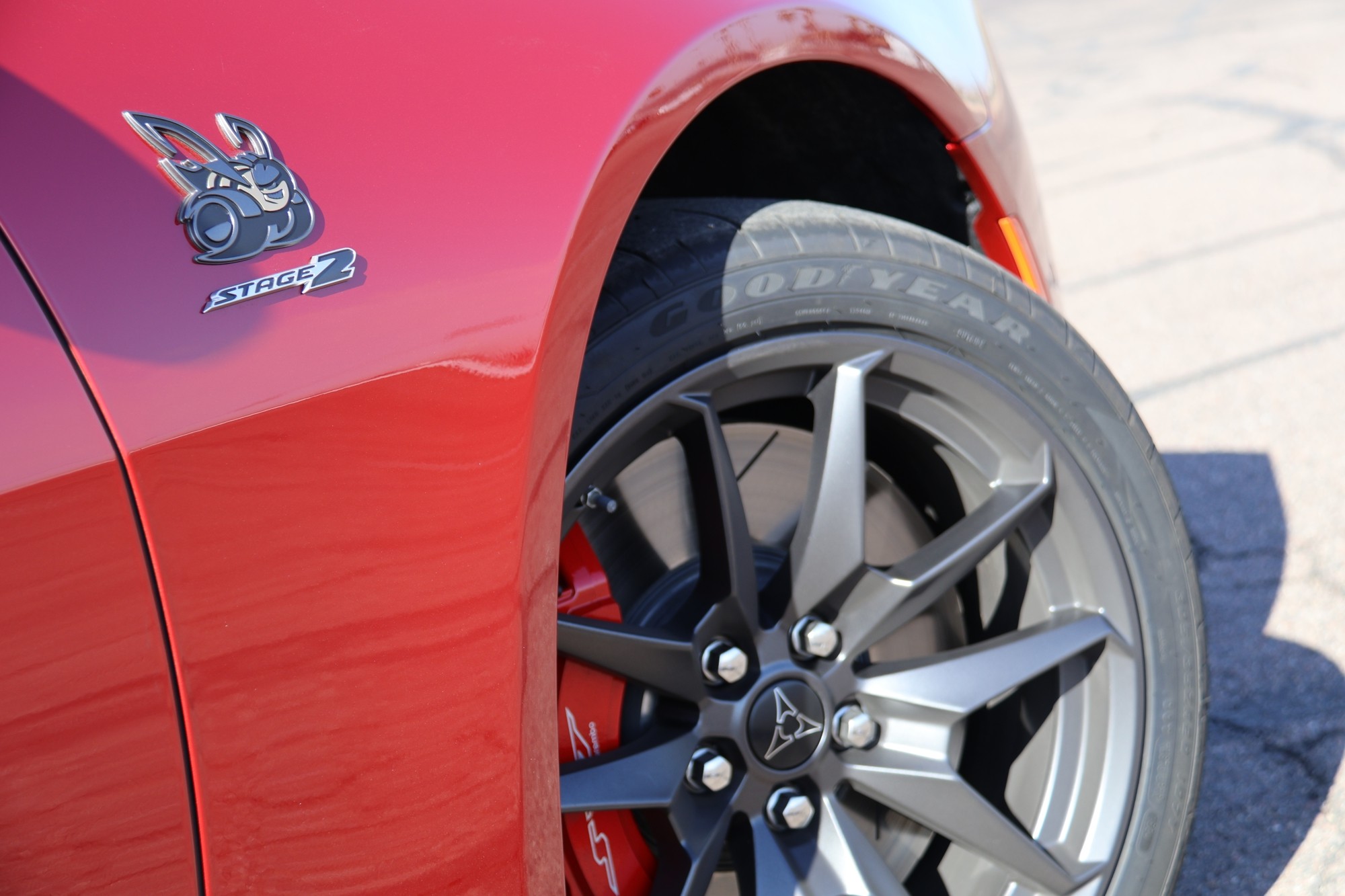 2024 Dodge Charger Daytona First Drive
2024 Dodge Charger Daytona First Drive
The Scat Pack, with its increased power, features 305/35ZR20XL Goodyear Eagle Sport All-Season tires on all corners. The Track Pack upgrades rear tires to 325/35ZR20 of the same all-season variety, with optional Goodyear Eagle F1 Supercar 3 summer tires available in the same size. Road drive cars used all-season tires, while track and drift sessions utilized summer tires. The wider, stickier tires contribute to the Scat Pack’s reduced range.
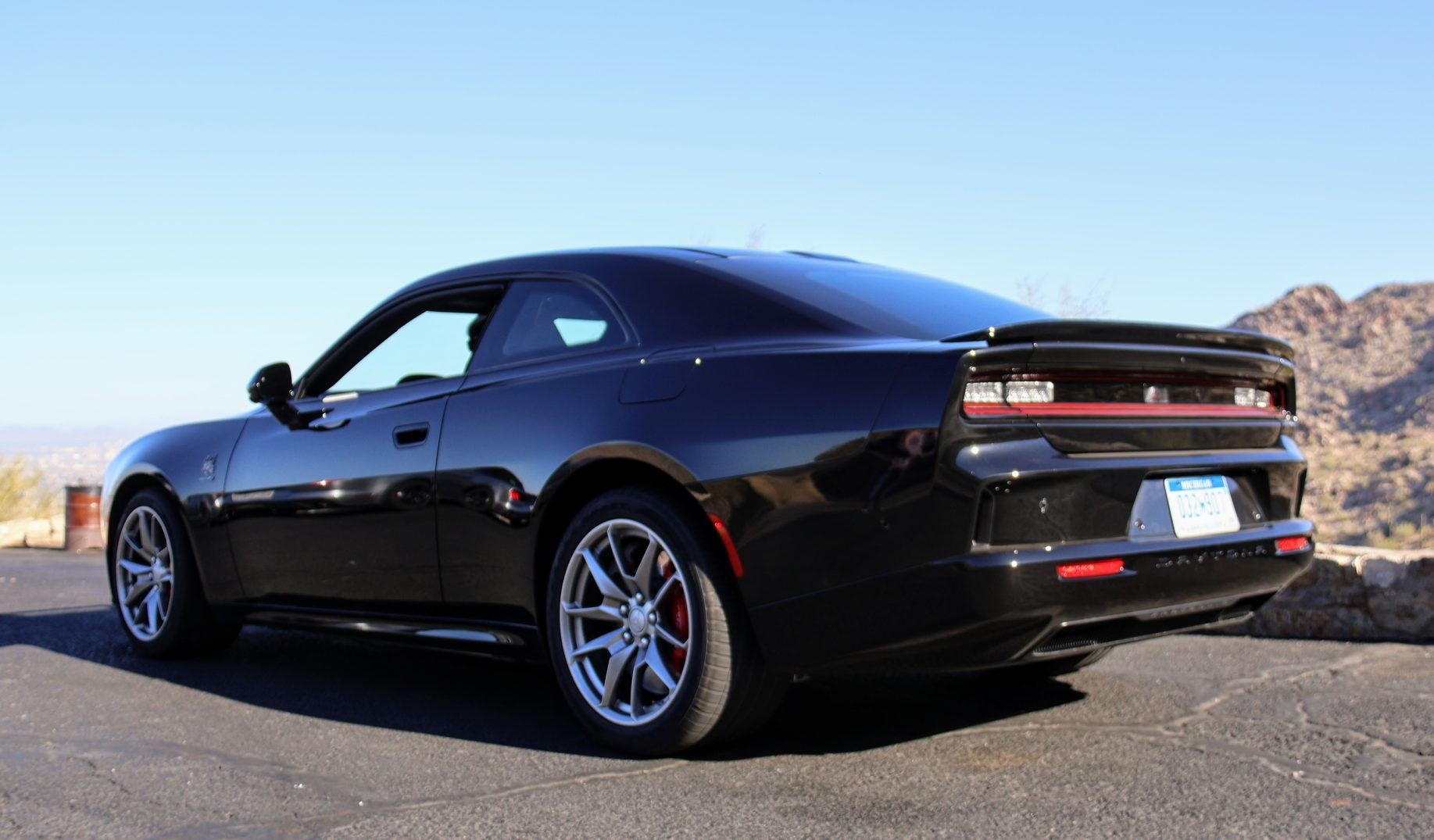 2024 Dodge Charger Daytona First Drive
2024 Dodge Charger Daytona First Drive
While Phoenix roads are generally well-maintained, imperfections like expansion joints were present. The Scat Pack’s ride quality was surprisingly good, even on less-than-perfect South Mountain roads. Despite 29% stiffer spring rates, harshness was minimal, likely due to the adaptive dampers. The R/T, tested later, also offered good ride quality, though expansion joints were more noticeable. Michigan road testing will provide further insights.
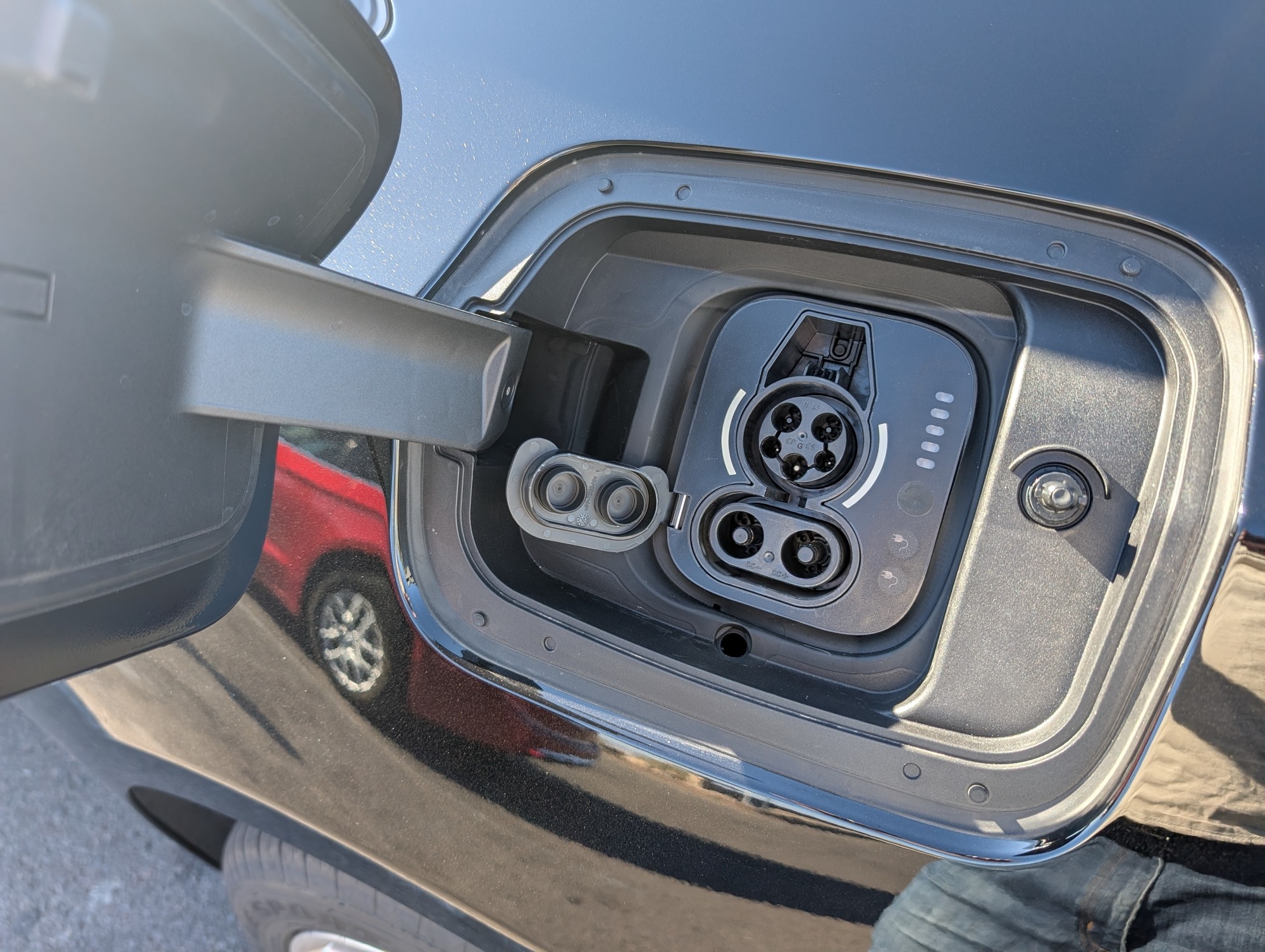 Pxl 20241205 171154827
Pxl 20241205 171154827
Ascending the winding South Mountain road revealed surprising agility. Despite the R/T’s 5,698 lbs and Scat Pack’s 5,767 lbs curb weight (nearly 1,200 lbs heavier than a Hellcat Charger), the low center of gravity from the battery pack and balanced weight distribution (50/50 vs. 57/43 for the V8) contribute to a nimble feel.
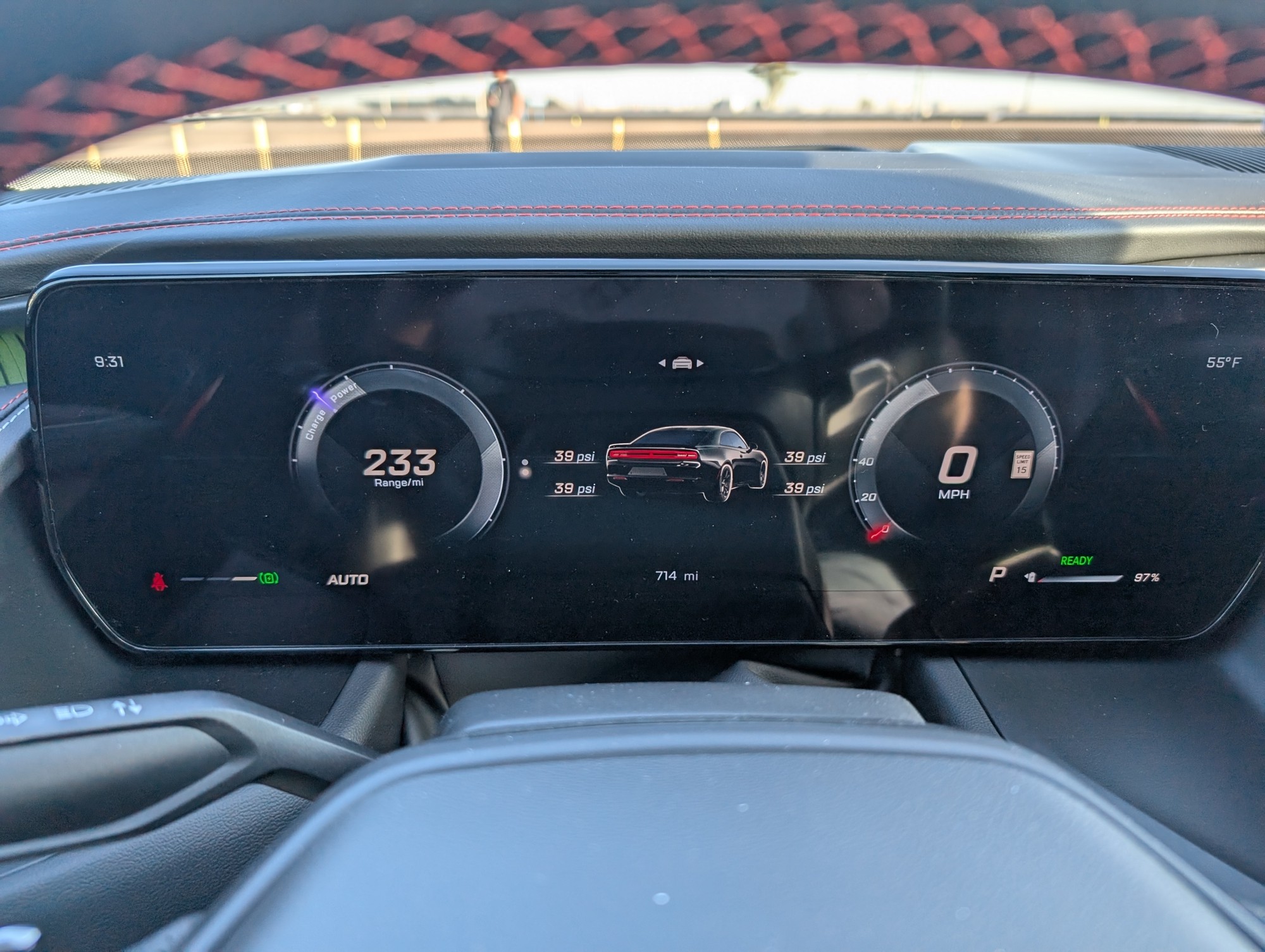 Pxl 20241205 163109653
Pxl 20241205 163109653
Combined with all-wheel drive, the new Daytona Charger feels surprisingly light-footed on twisty roads. Steering and width were the only minor drawbacks.
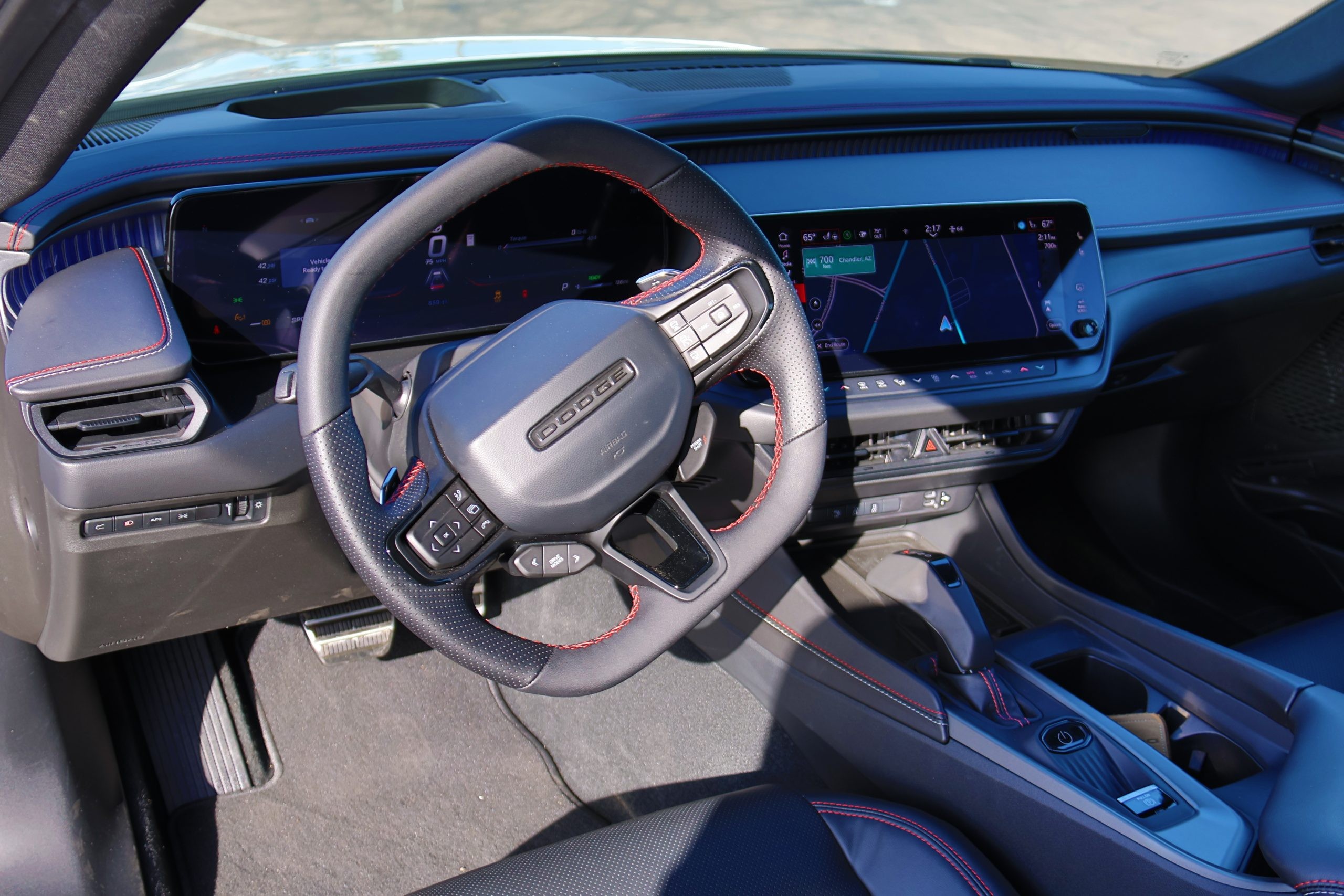 2024 Dodge Charger Daytona First Drive
2024 Dodge Charger Daytona First Drive
The variable ratio steering, while functional, lacked feedback, even in Sport or Track modes. Effort increased with mode changes, but road feel remained muted. While perhaps fitting for a muscle car, it was slightly disappointing. The Charger’s width also demanded caution on narrow mountain roads with blind curves.
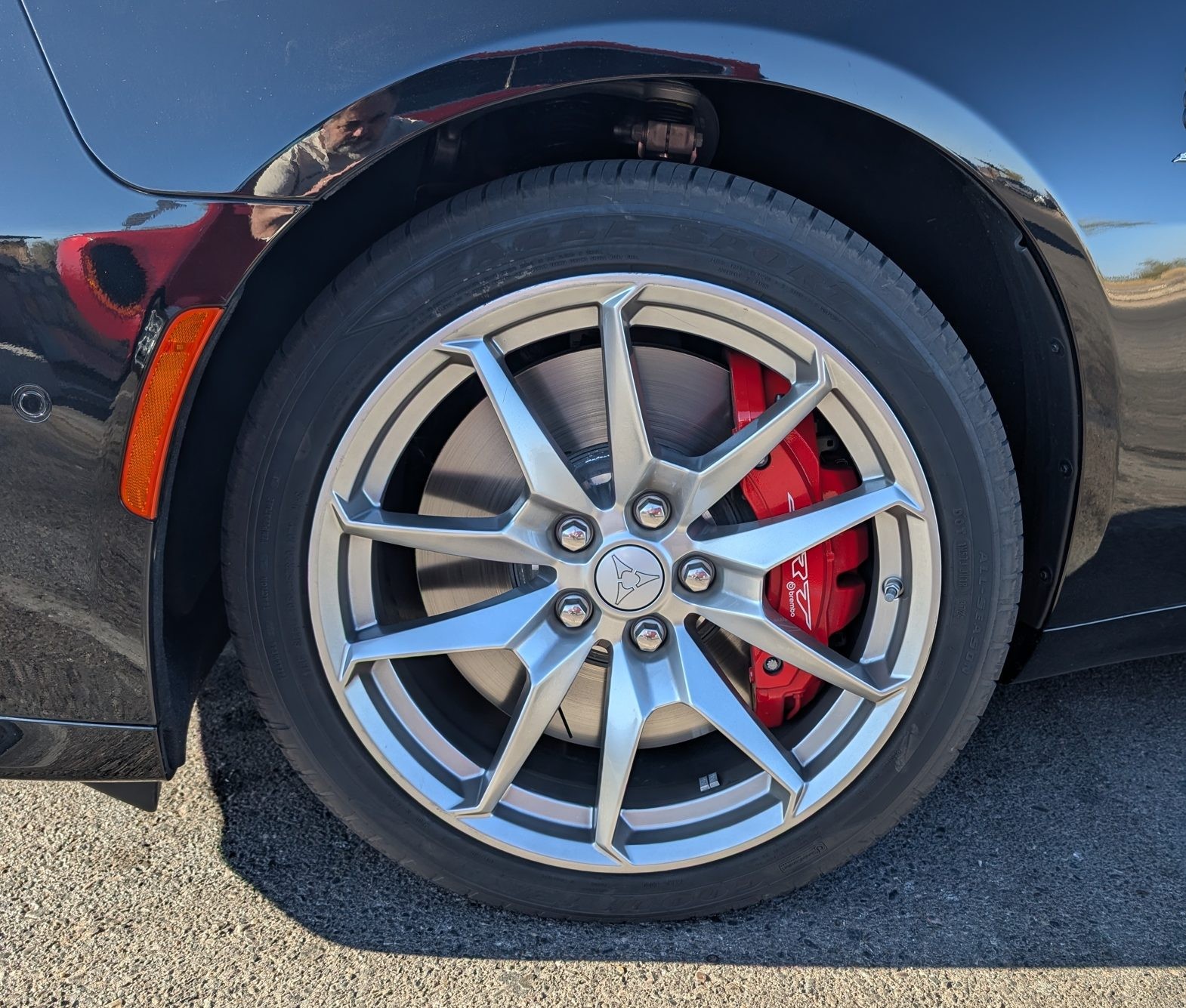 Pxl 20241205 171055062
Pxl 20241205 171055062
Braking is well-managed. The R/T uses 354-mm front and 350-mm rear rotors with floating calipers. The Scat Pack upgrades to 410-mm rotors front and rear, with six-piston Brembo front and four-piston rear calipers. Regenerative braking is adjustable via steering wheel paddles. Large brakes are necessary because when fully charged, regenerative braking capacity is limited, requiring friction brakes for energy dissipation, especially on track.
Uconnect 5 offers a creep mode toggle. Creep mode on and low regen mimic a traditional automatic transmission. Creep off and max regen provide stronger deceleration, though not as aggressive as some EVs.
Sound settings were explored throughout the drive. While not a Hellcat roar, the loudest setting is aggressive and fitting for a muscle car, more so than the Ioniq 5N or Mach-E in their performance modes.
Simulated shifting, like in the Hyundai, is absent, which is somewhat regrettable. While a gimmick, it can enhance backroad driving fun. For commuting, leaving it off is more relaxing.
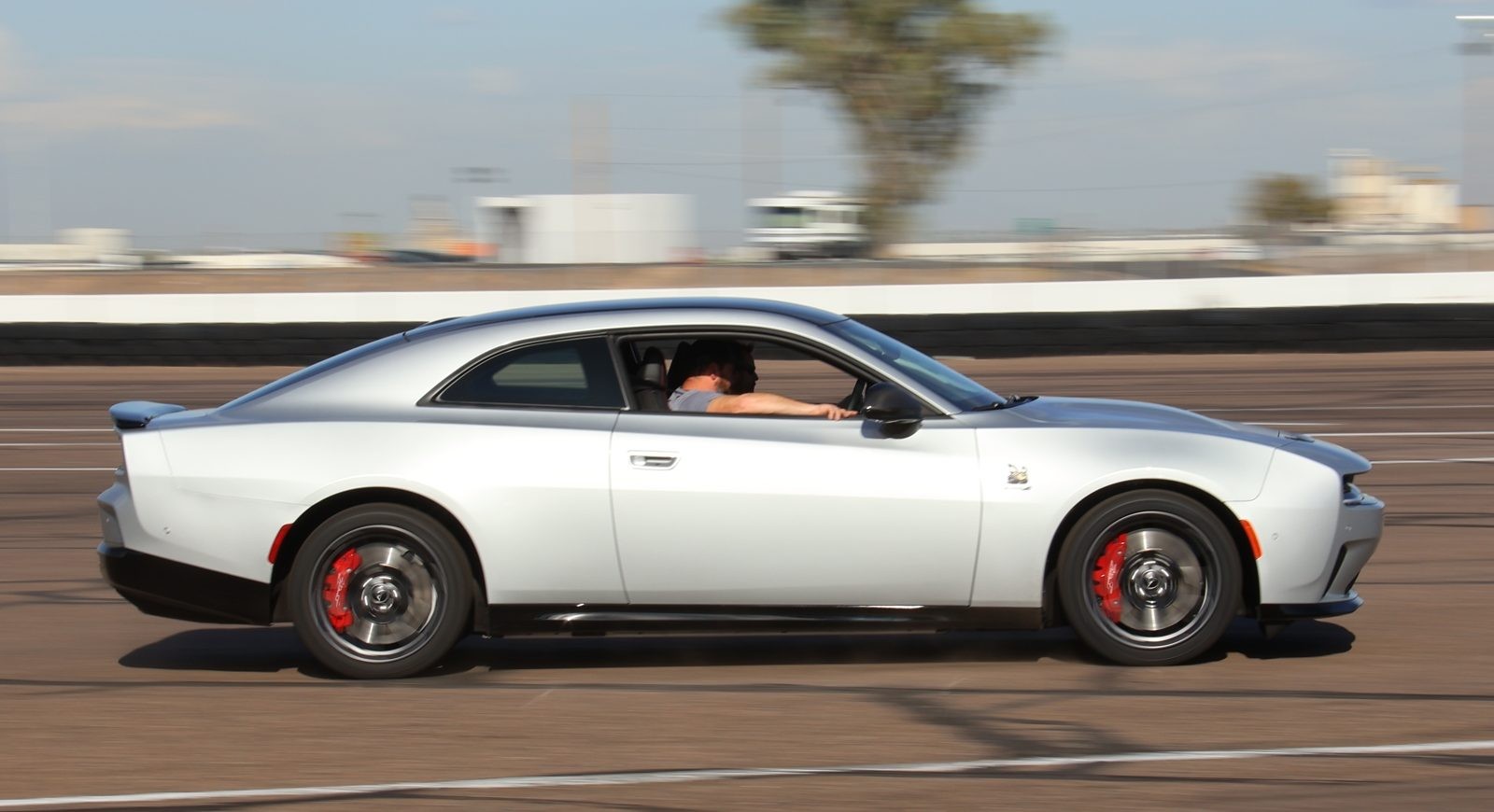 2024 Dodge Charger Daytona First Drive
2024 Dodge Charger Daytona First Drive
Track Time and Drifting: Unleashing the e-Muscle Beast
Track laps at Radford school, in Scat Pack cars on summer tires, showcased the new Daytona Charger’s track capability. Despite its weight, balance felt surprisingly good, and width was less of an issue on the track. Race prep mode in the infotainment system optimizes battery temperature for maximum power output, taking up to 5 minutes.
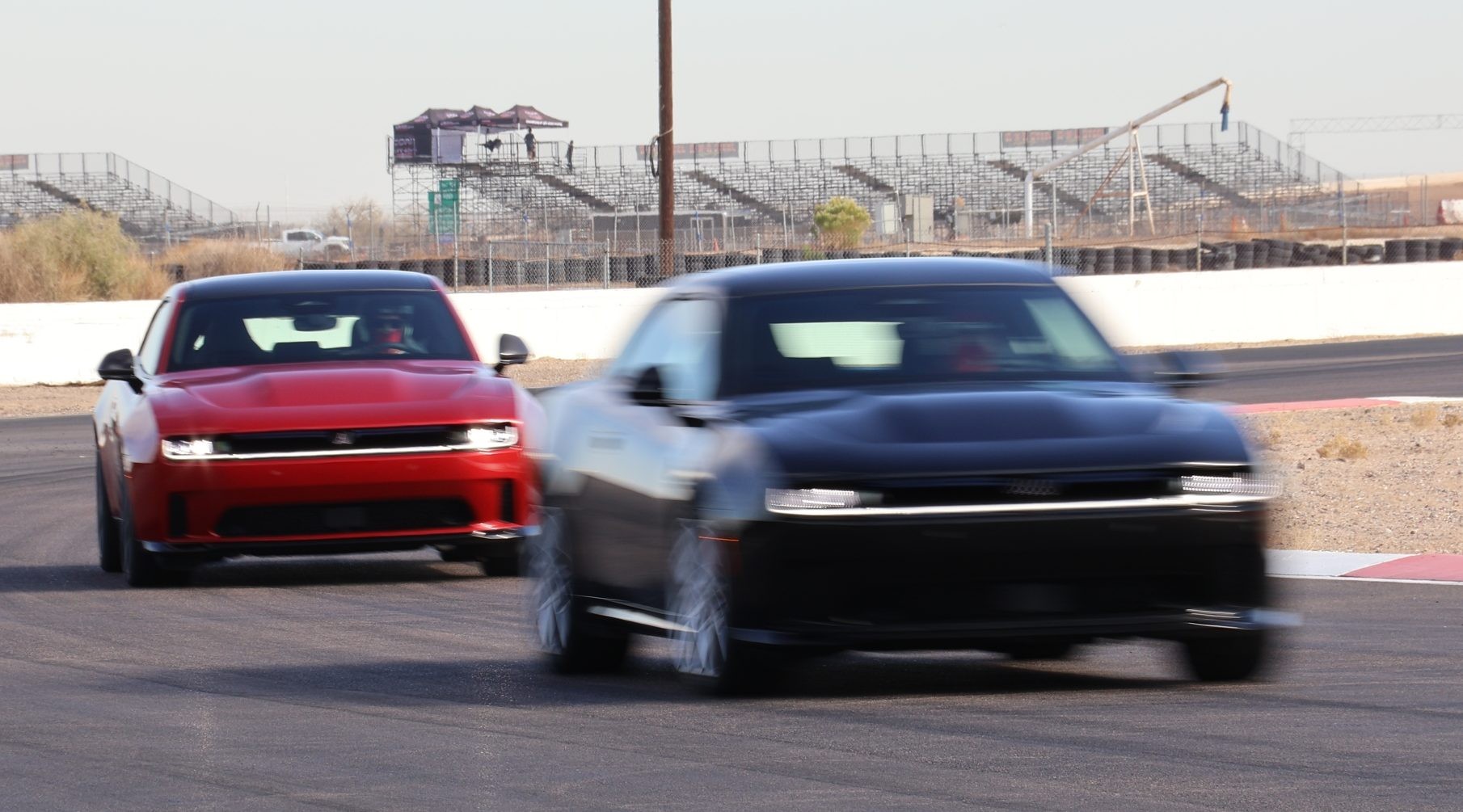 2024 Dodge Charger Daytona First Drive
2024 Dodge Charger Daytona First Drive
Power Shot, engaged on the pit straight, provides an extra boost, though the standard 630 hp is ample. The Fratzonic exhaust’s audio feedback aids performance gauging and adds to the driving experience.
Drift mode, tested on the skid pad, decouples the front EDM, making the new Daytona Charger rear-wheel drive. Even with half the power, instant electric torque makes initiating drifts easy, even on Supercar tires. Maintaining drifts requires practice in pedal modulation.
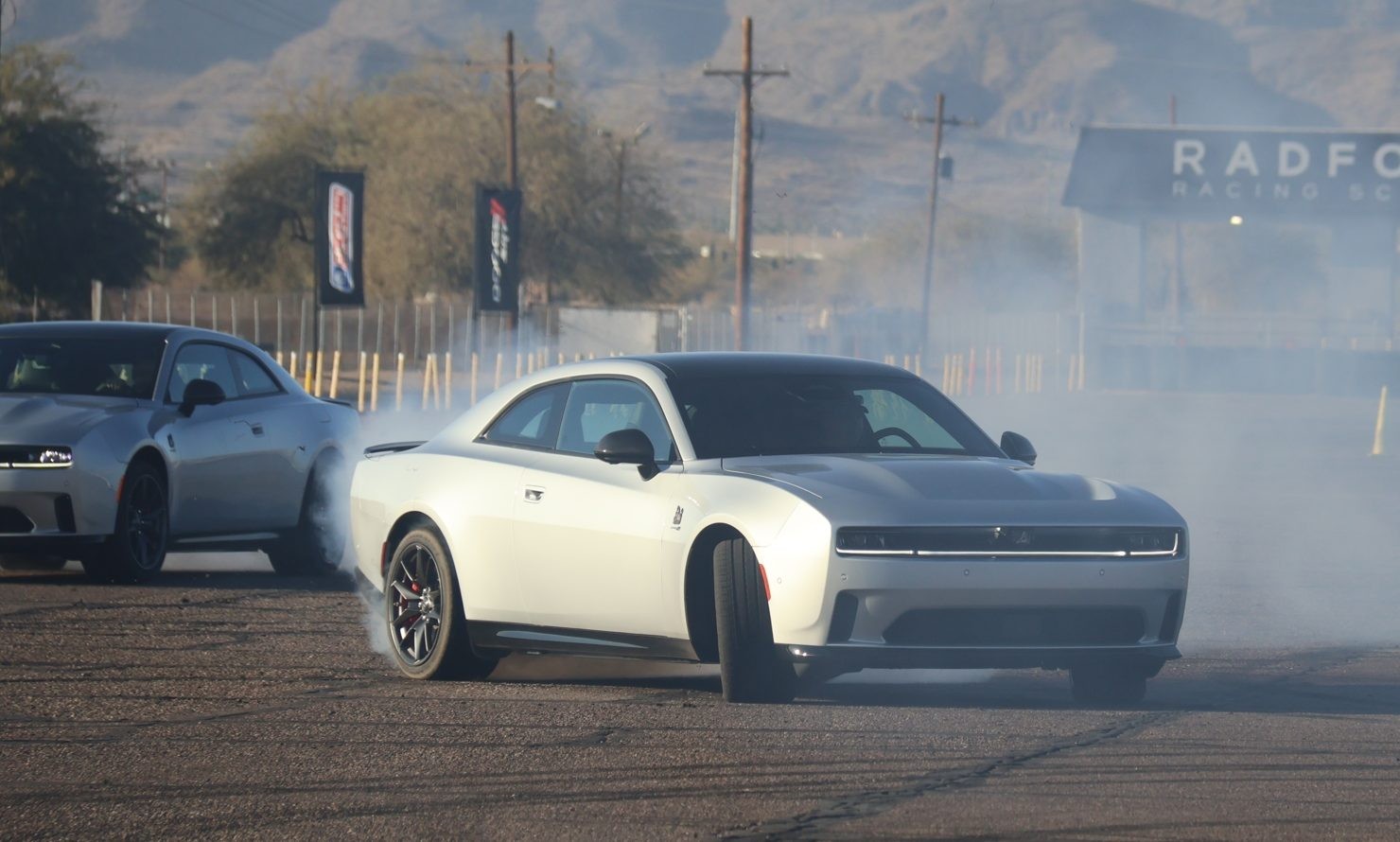 2024 Dodge Charger Daytona First Drive
2024 Dodge Charger Daytona First Drive
Drag strip runs (observed, not personally experienced) revealed consistent 11.4 to 11.7-second elapsed times, quicker than a non-Demon Hellcat, thanks to instant torque and all-wheel drive enabling consistent launches.
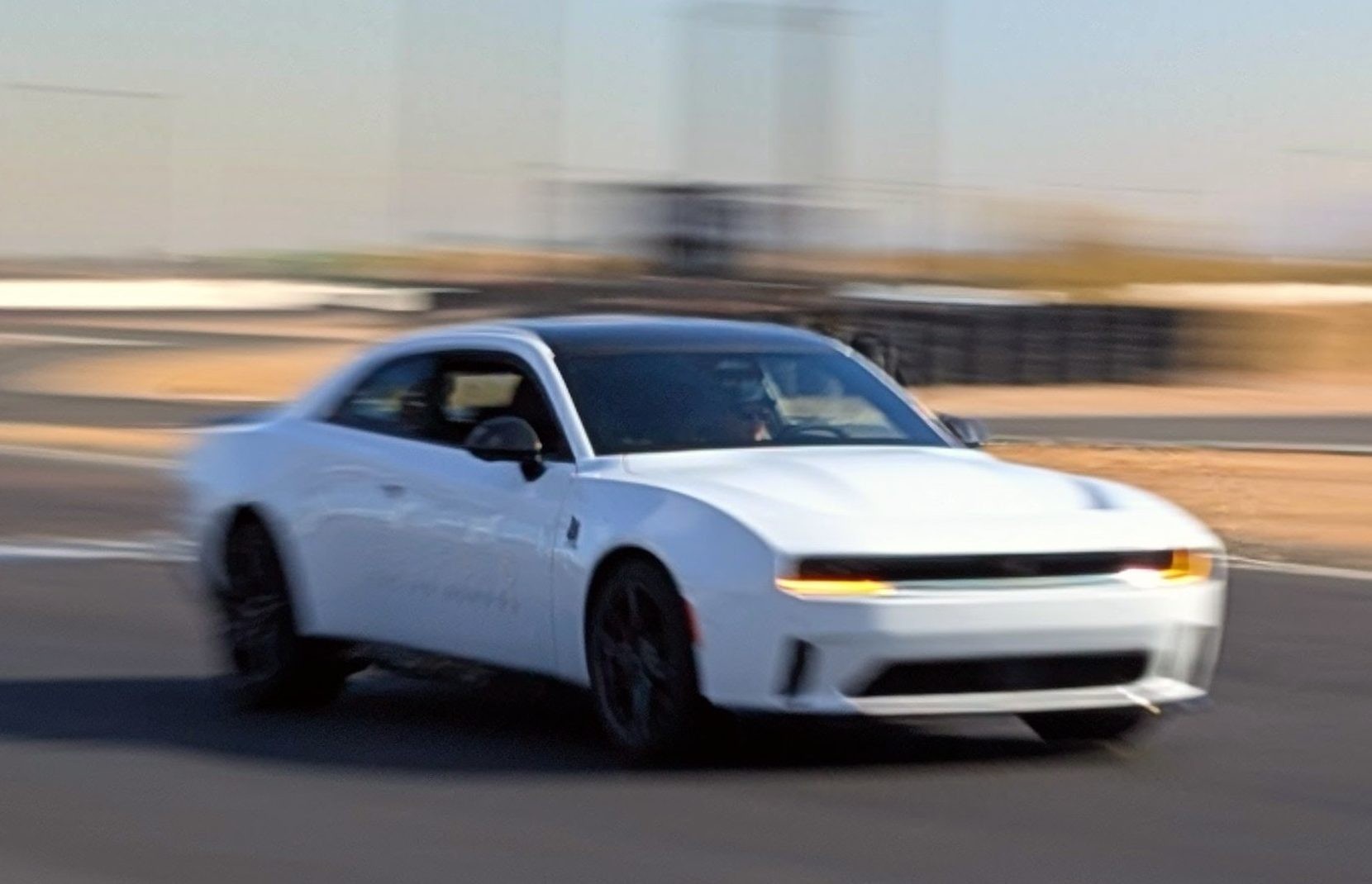 Pxl 20241205 200057938.action Pan 01.cover~2
Pxl 20241205 200057938.action Pan 01.cover~2
Driving the R/T after the Scat Pack highlighted the performance difference. While still quick (0-60 mph in 4.7 seconds with Power Shot), it lacked the Scat Pack’s brutal acceleration. However, for most previous Charger buyers who opted for V6 models, the R/T will be more than satisfactory. R/T models lack Track, Drift, and Drag modes and have smaller tires, but visually remain similar.
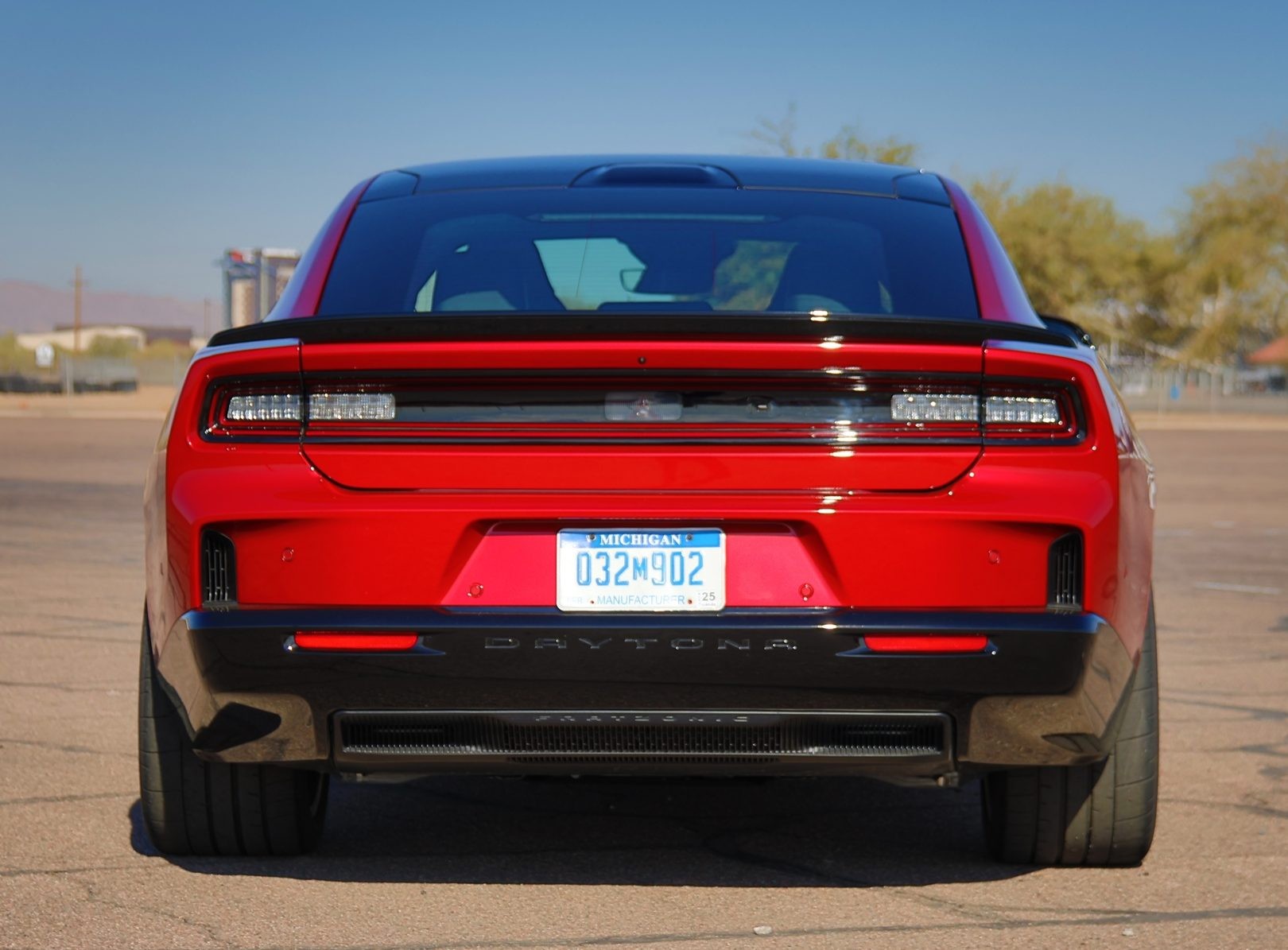 Img 8358~2
Img 8358~2
Defining the new Daytona Charger’s competition is complex. Likely contenders include the Ioniq 5N, Mach-E GT, and Tesla Model S Plaid. The Plaid, with exceptional acceleration, shares muscle car traits, though handling isn’t its forte. The Tesla out-accelerates the Charger, but the Dodge boasts a sleeker design than the Hyundai or Ford.
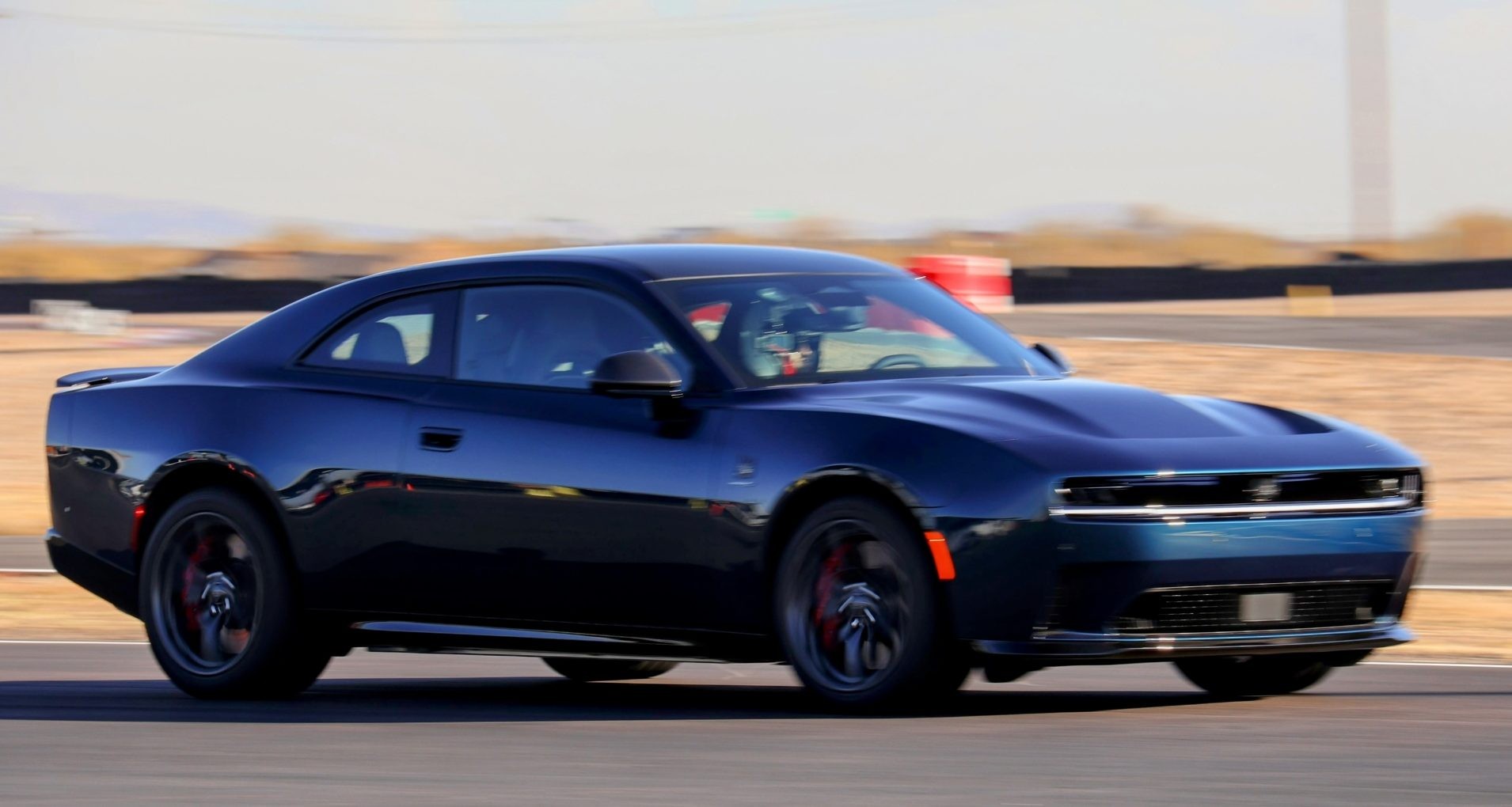 Img 8715~2
Img 8715~2
Alternatively, the Charger can be considered a more affordable, roomier, and uniquely characterful alternative to crossover coupes like the BMW X6M or Porsche Cayenne Coupe.
Initially, the new Daytona Charger isn’t inexpensive. The R/T starts at $61,590 (including delivery), and the inaugural Scat Pack at $75,185. While pricier than the 2023 Scat Pack Widebody, the new Scat Pack outperforms the $95,000 Hellcat Redeye.
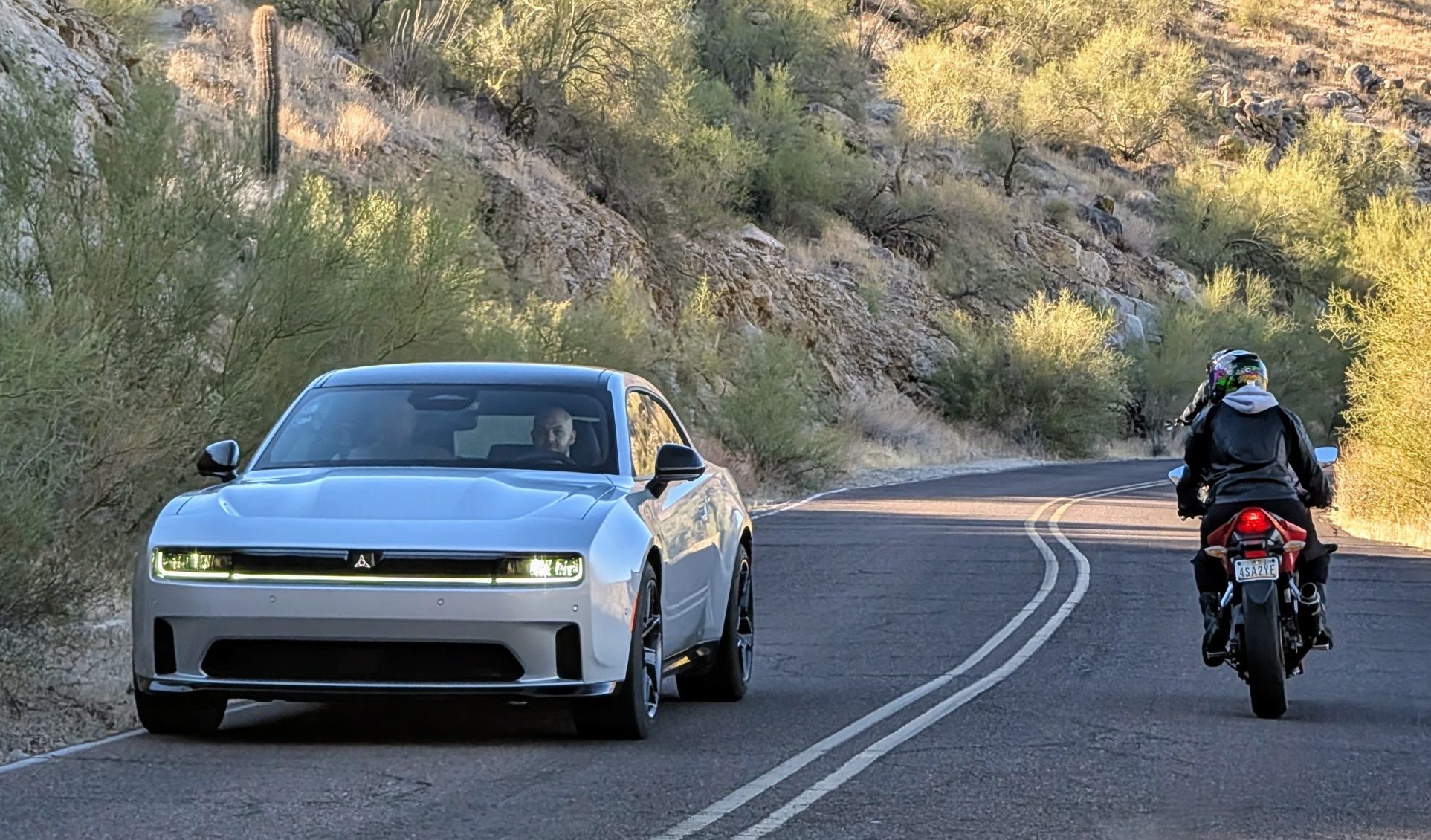 Pxl 20241205 172632161
Pxl 20241205 172632161
Battery modules are initially sourced from Samsung in Hungary, making the car ineligible for US federal tax credits for purchase, though leases may qualify. Stellantis and Samsung’s Indiana joint venture factories, starting production in 2025, could change eligibility if the IRA remains unchanged.
Final Verdict: A True Muscle Car for the Electric Age
After a day with the new Dodge Charger Daytona, it convincingly carries the muscle car torch into the electric era. The Scat Pack, despite its weight, is the quickest Charger ever, rivaling Vipers and only surpassed by Challenger Demons. While lacking a V8’s rumble, the Fratzonic sound is engaging, and practicality exceeds expectations.
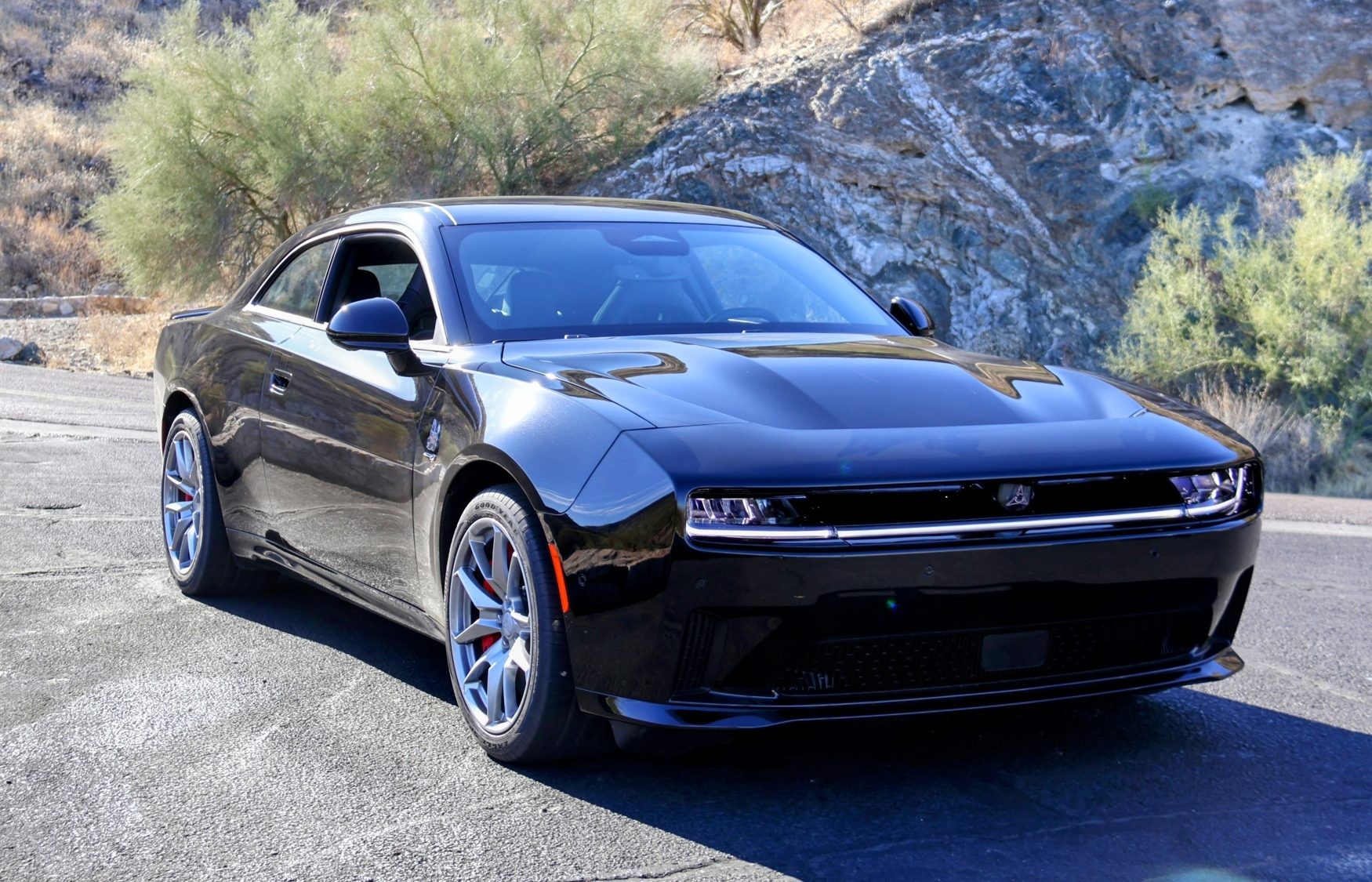 Img 8318~2
Img 8318~2
The challenge for Dodge is that Charger purchases are rarely purely rational. While the new Daytona Charger isn’t a necessity, its desirability is undeniable. V8 purists may remain resistant, but open-minded muscle car enthusiasts who test drive the new Daytona Charger might discover a compelling new breed of American e-Muscle, extending Dodge’s legacy into a new halcyon period.